Day 50 - Kushikino To Hioki And Visiting A Thousand Year Old Tree, The Kyushu 108 Temple Pilgrimage, Japan
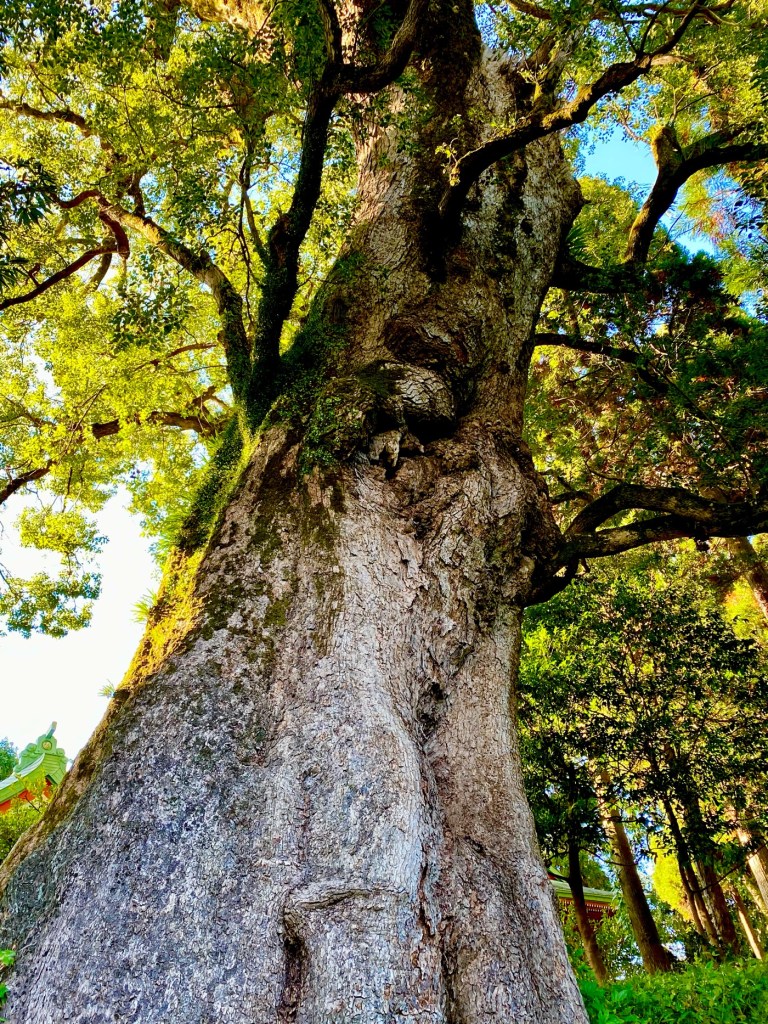
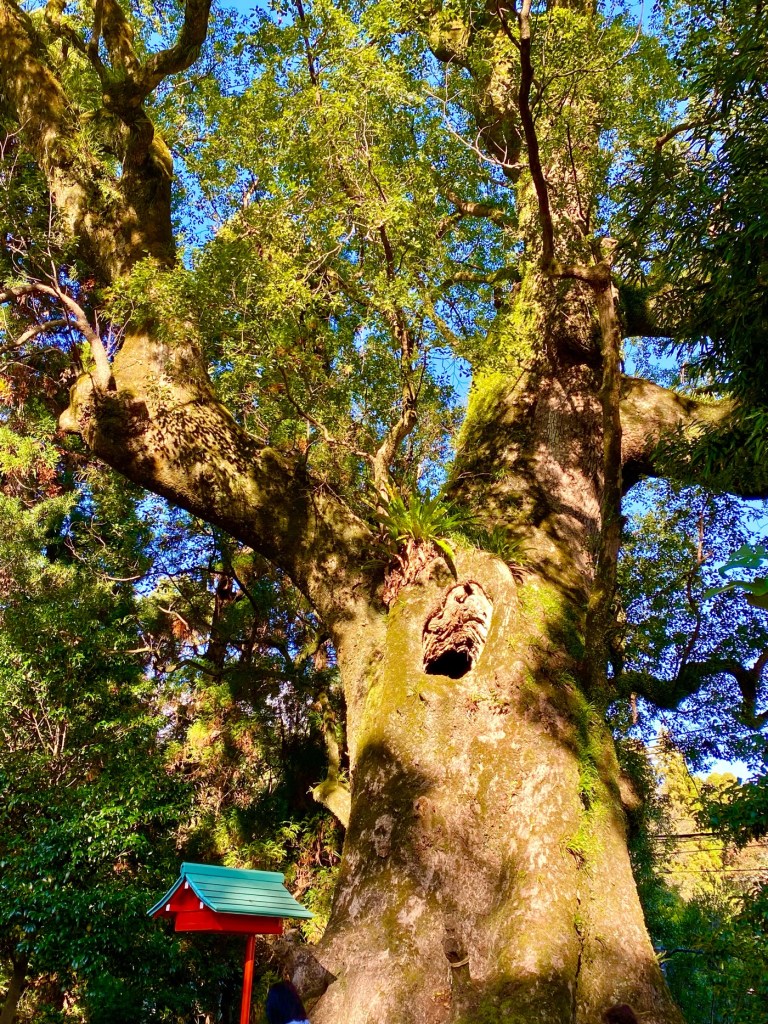
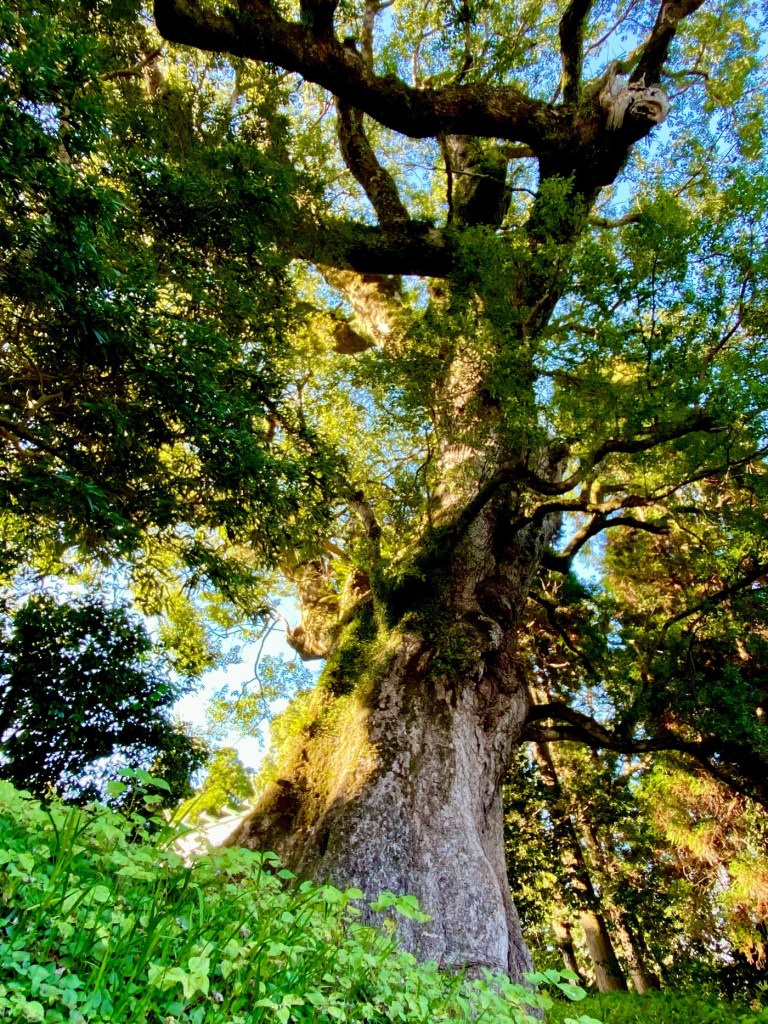
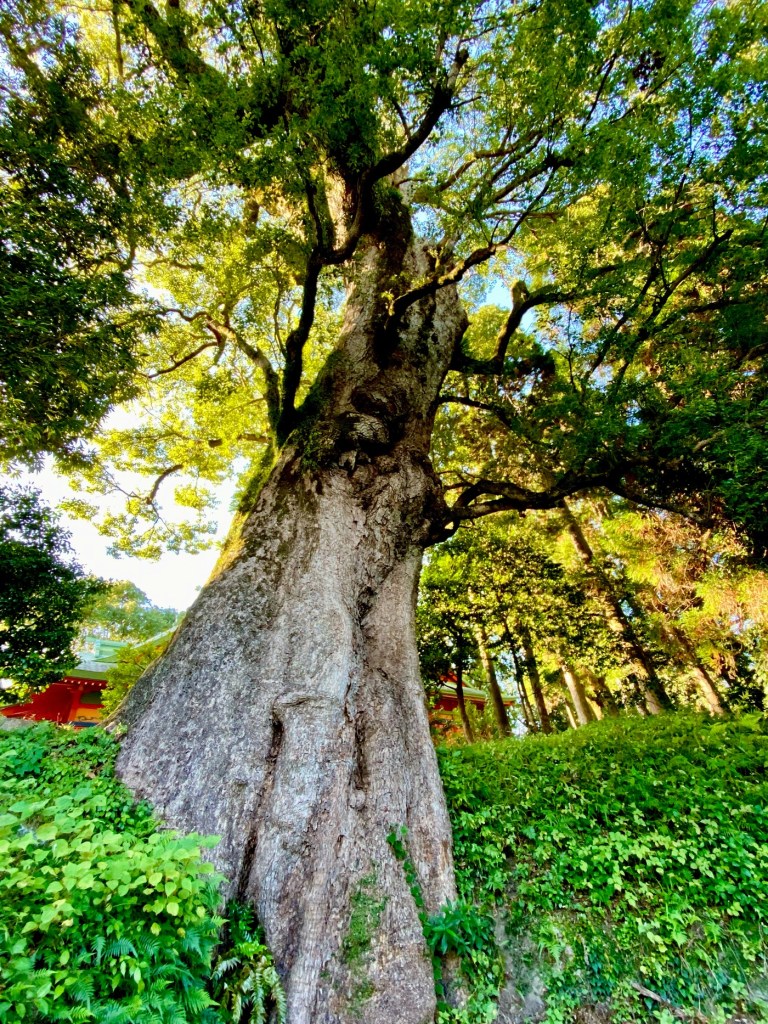
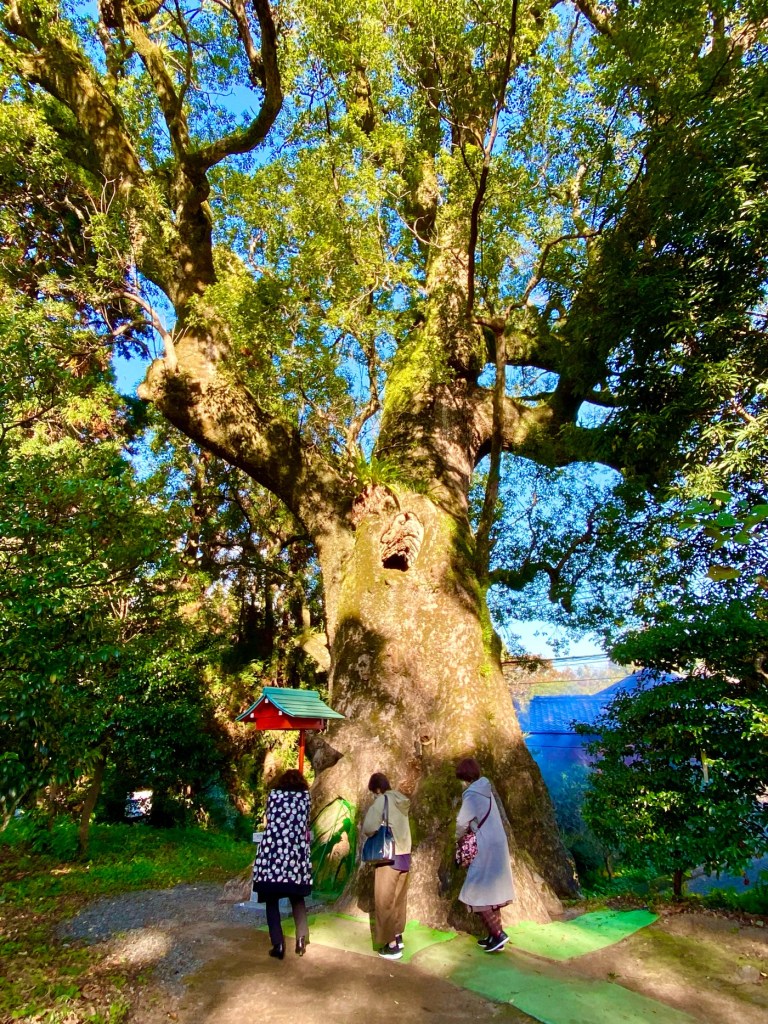
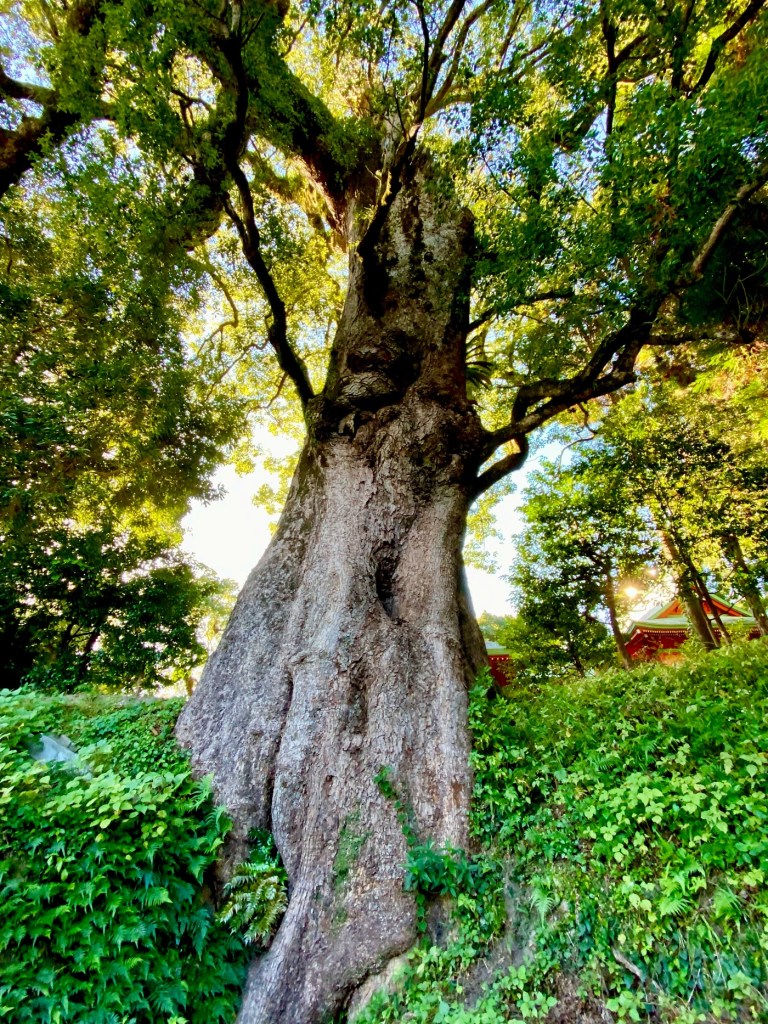
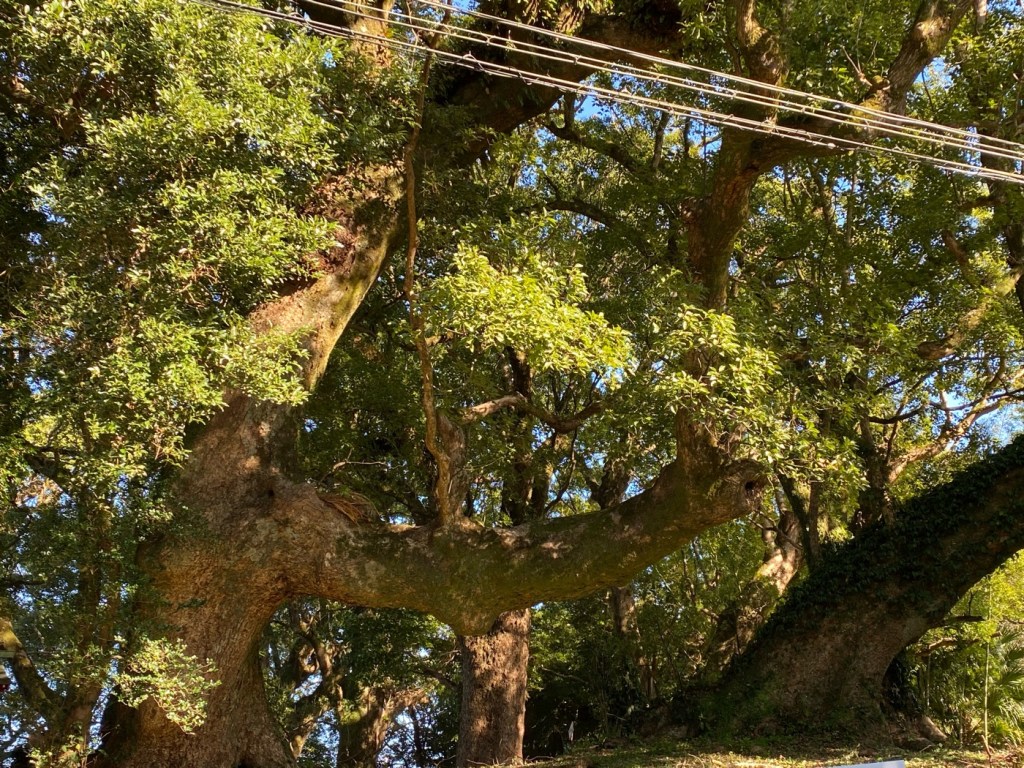
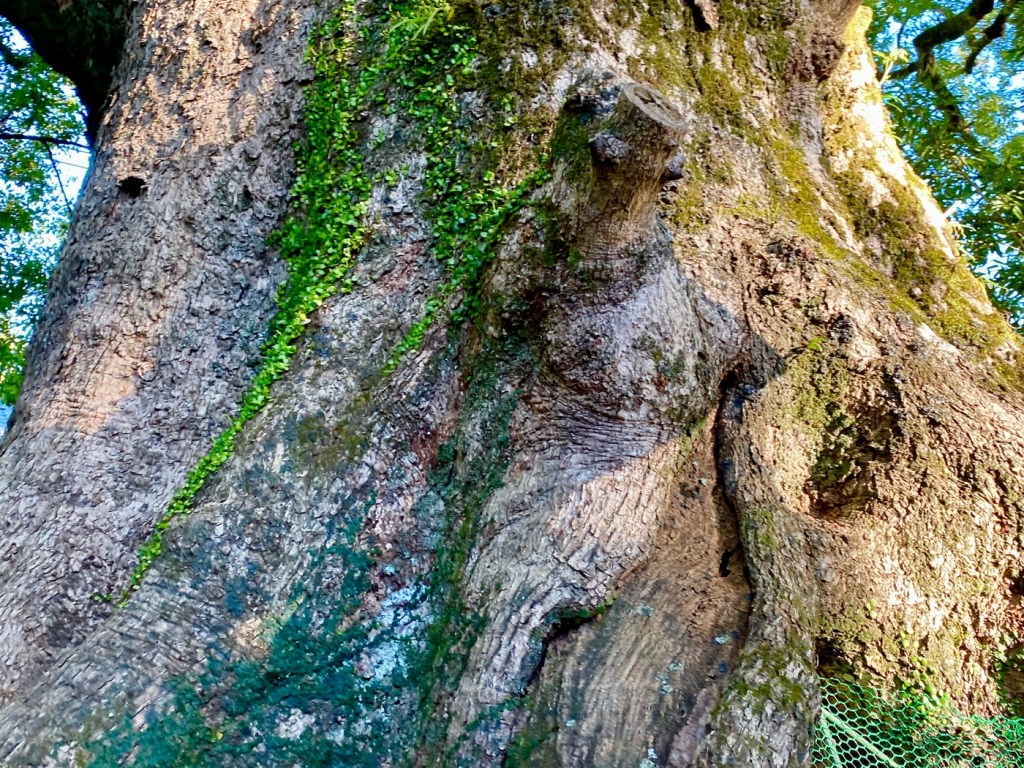
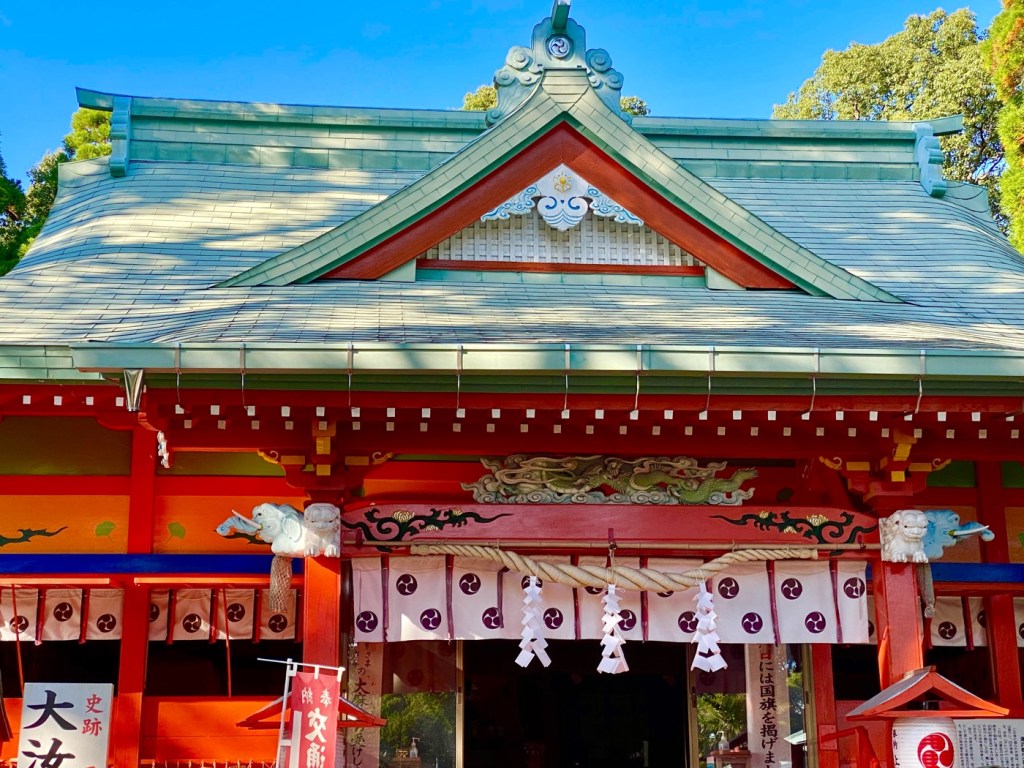
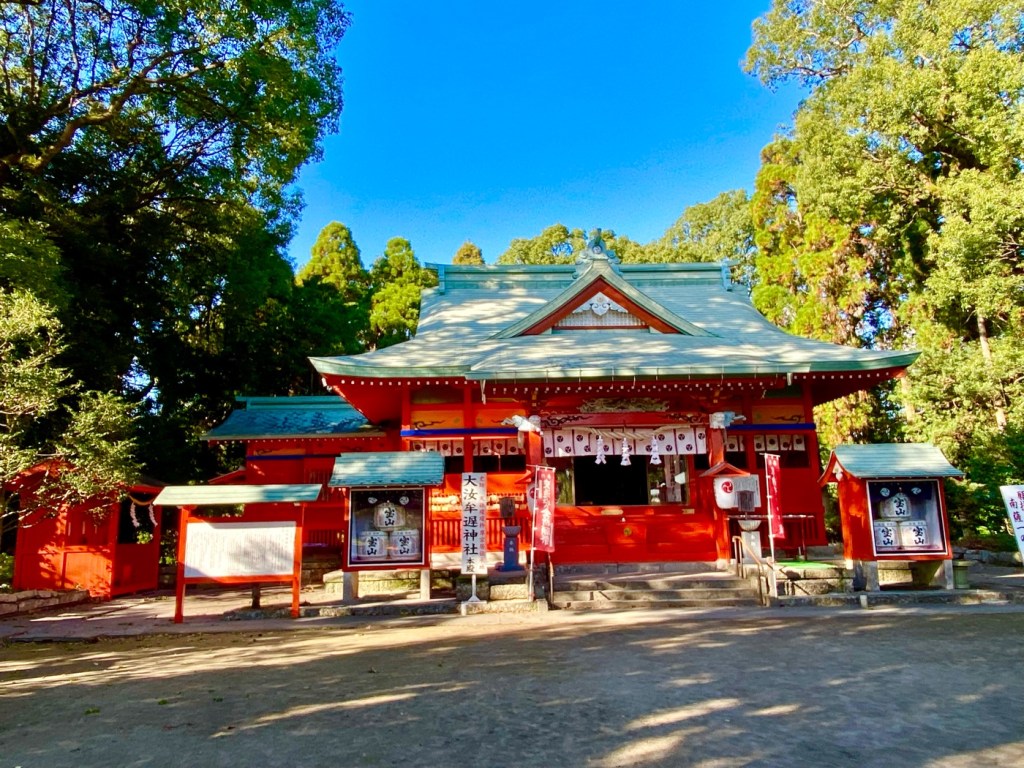
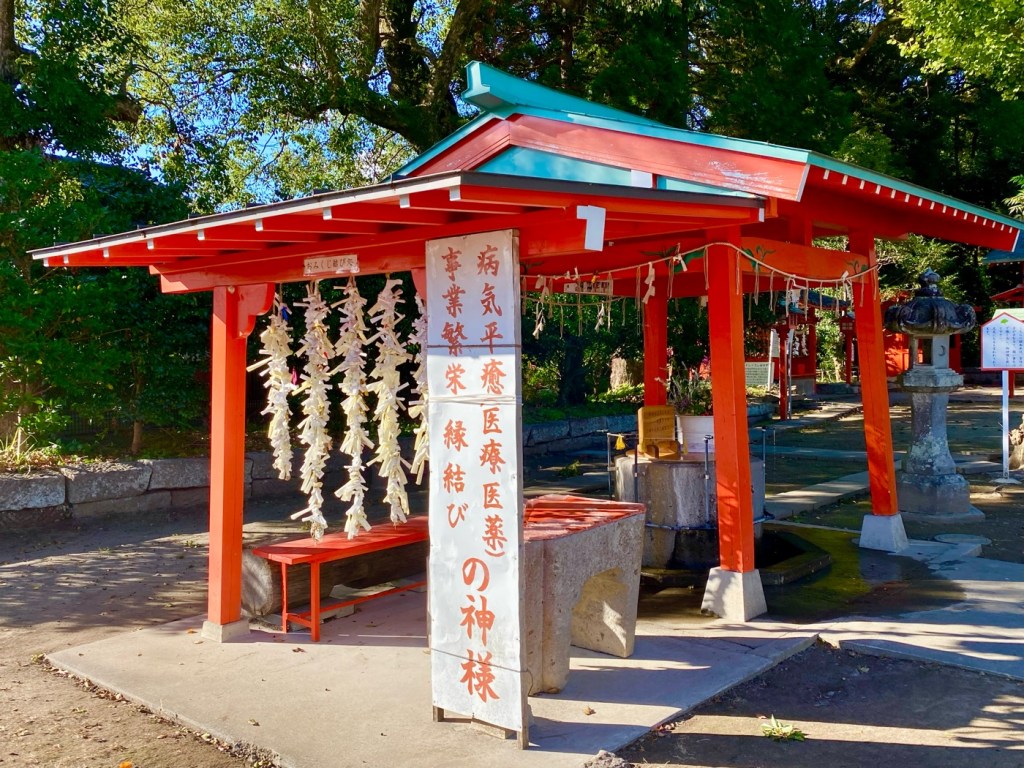
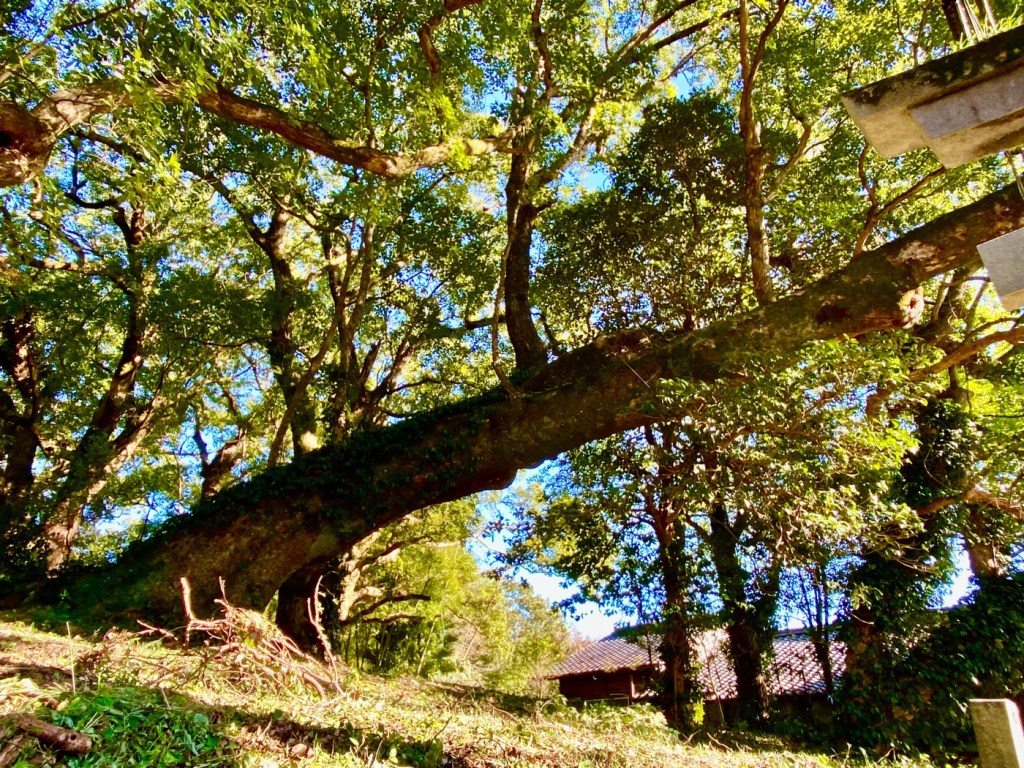
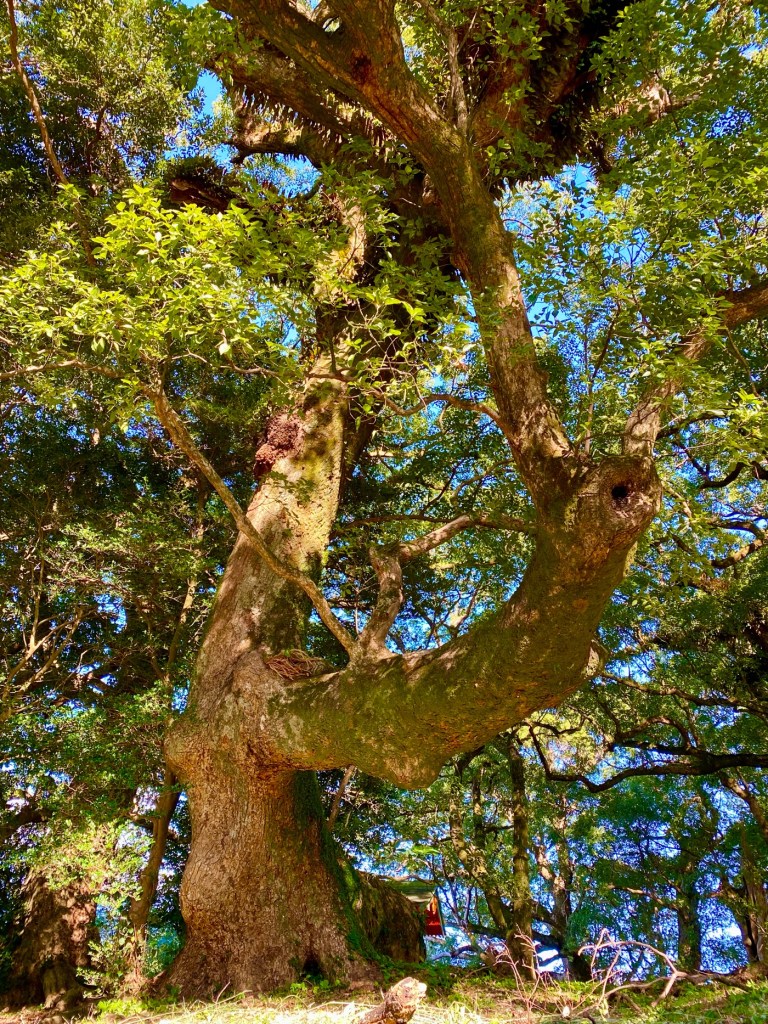
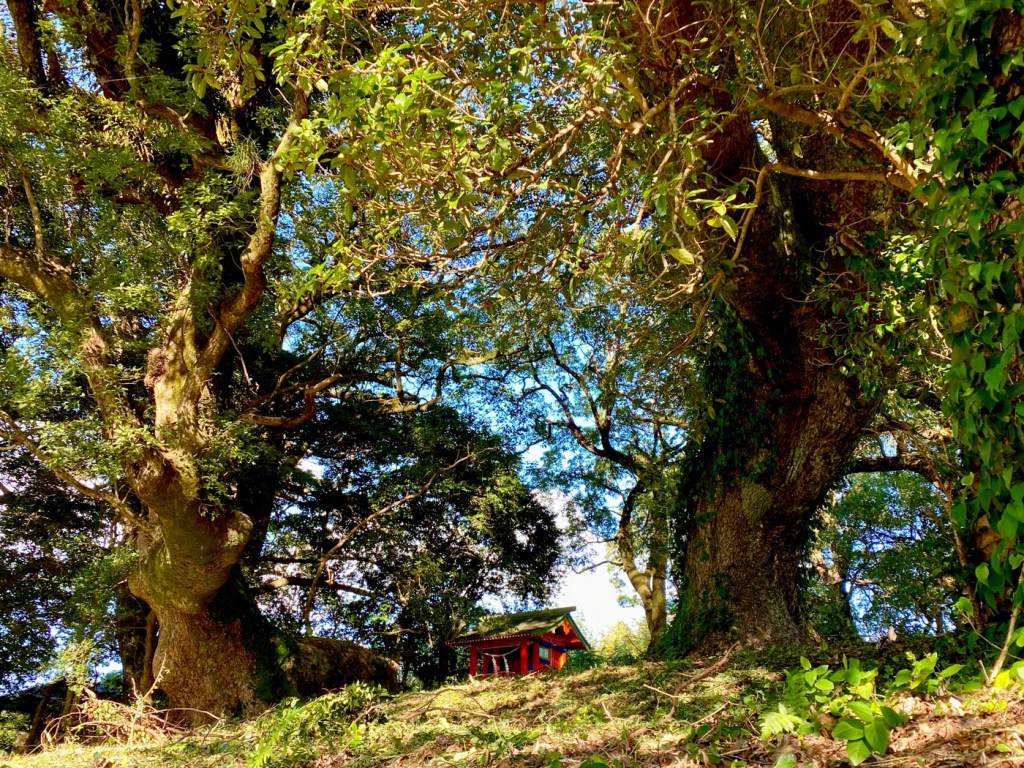
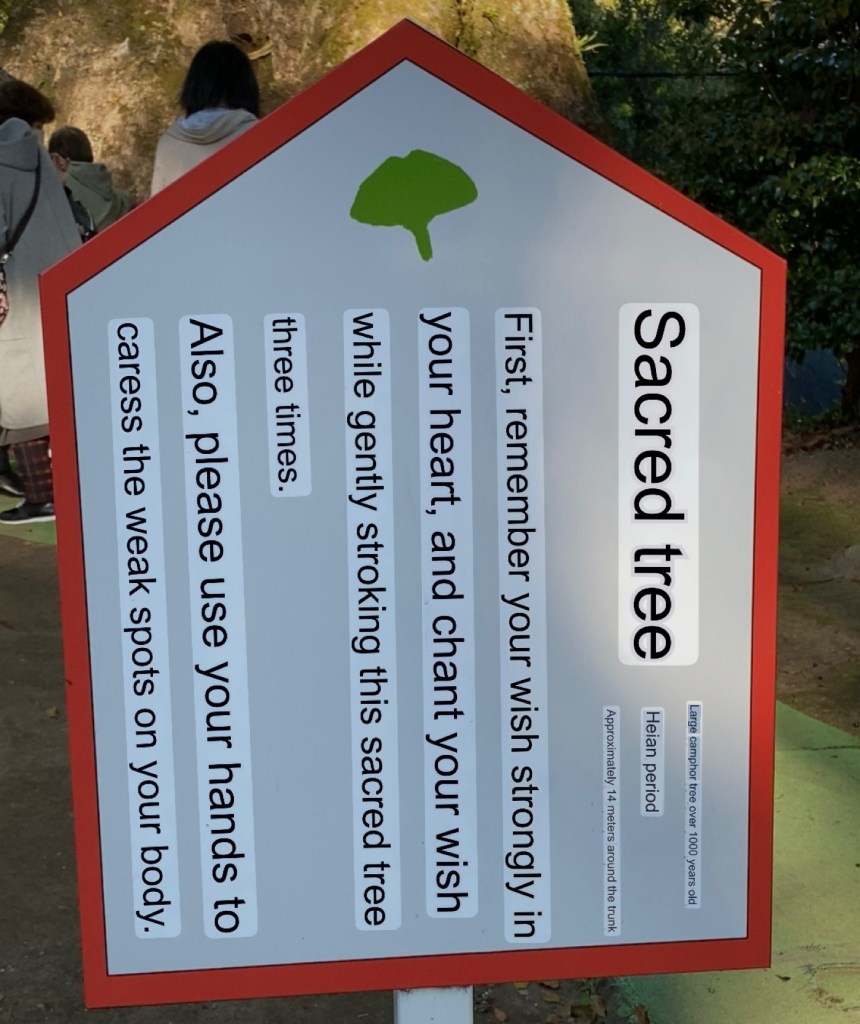
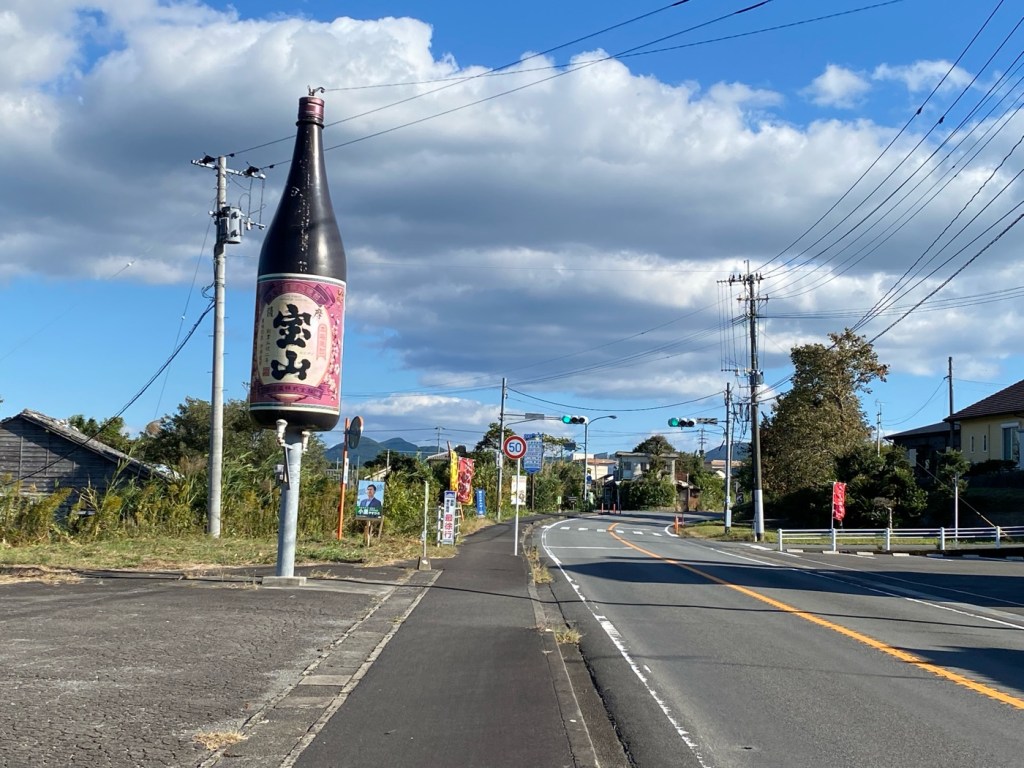

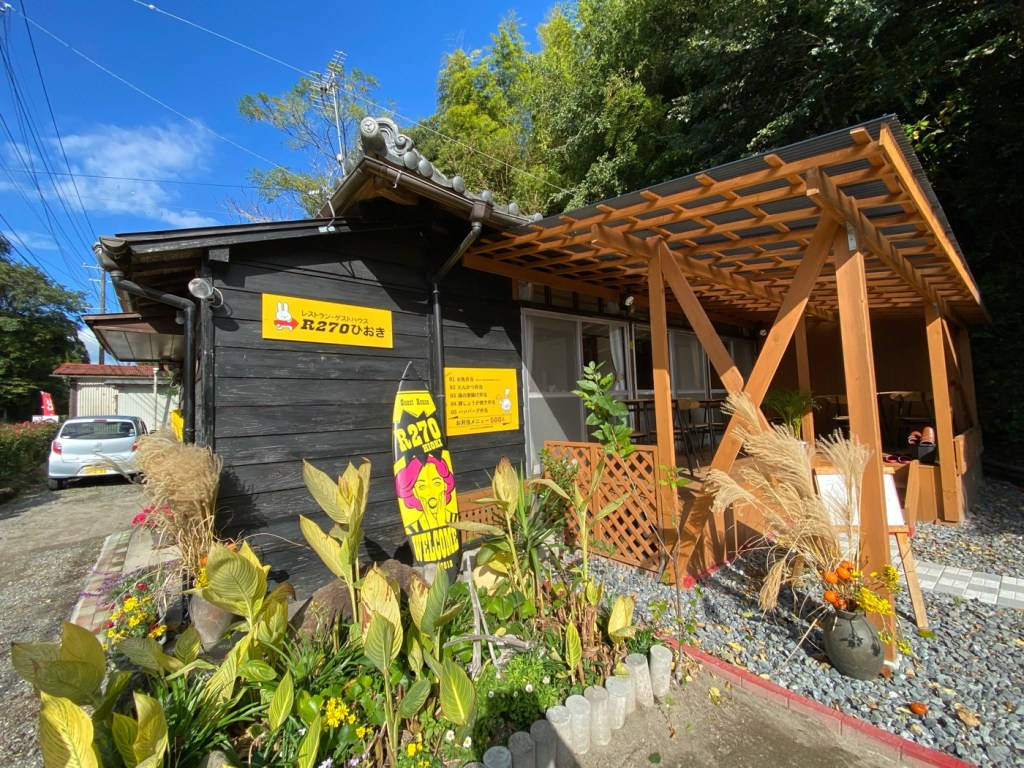
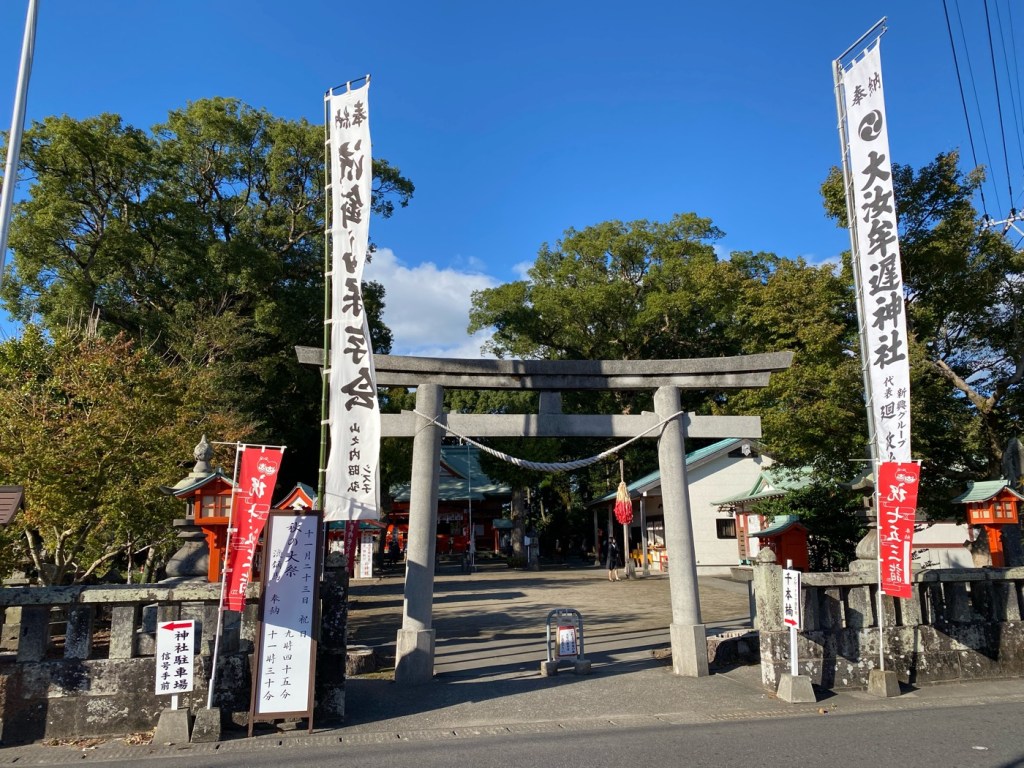

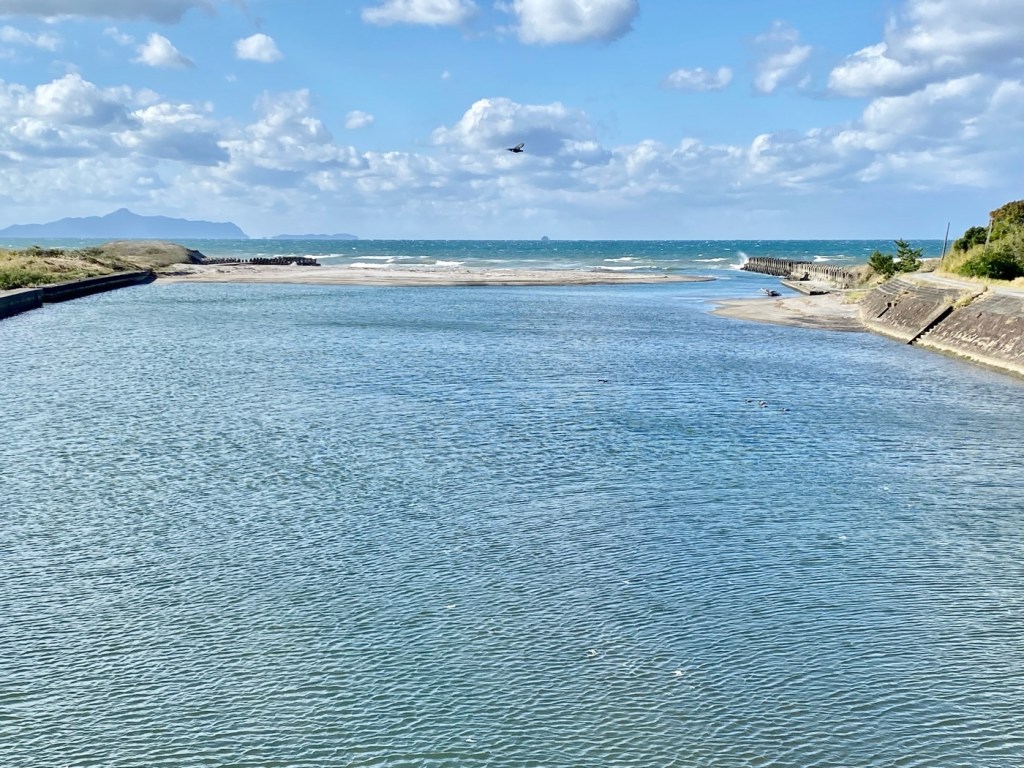
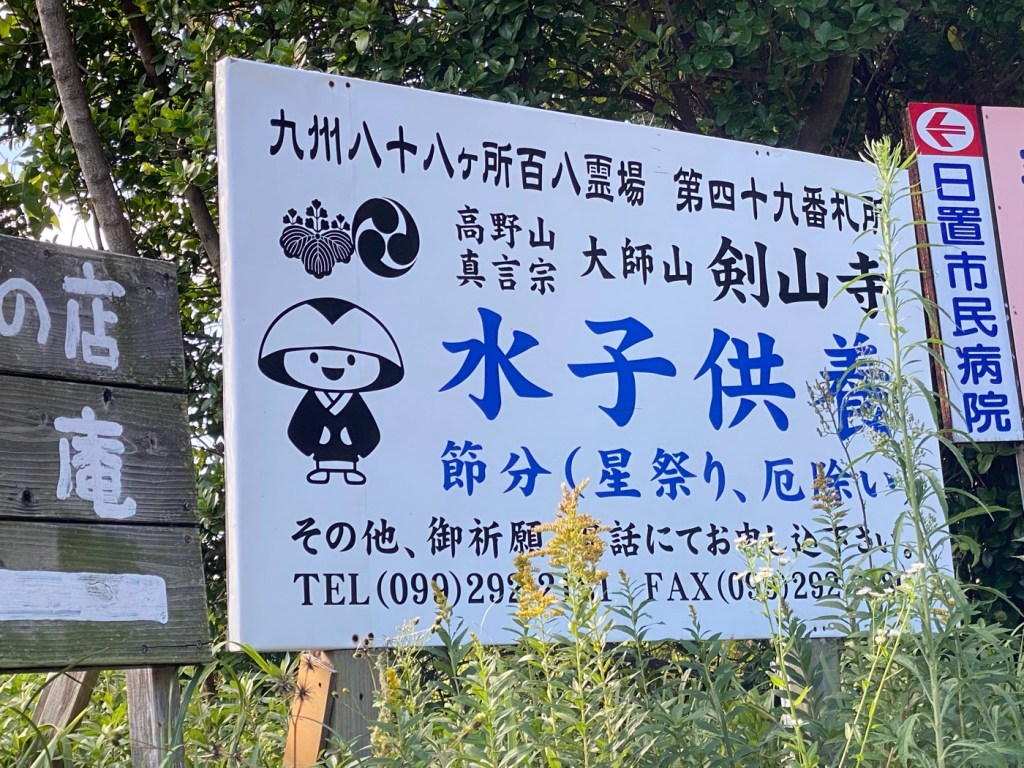
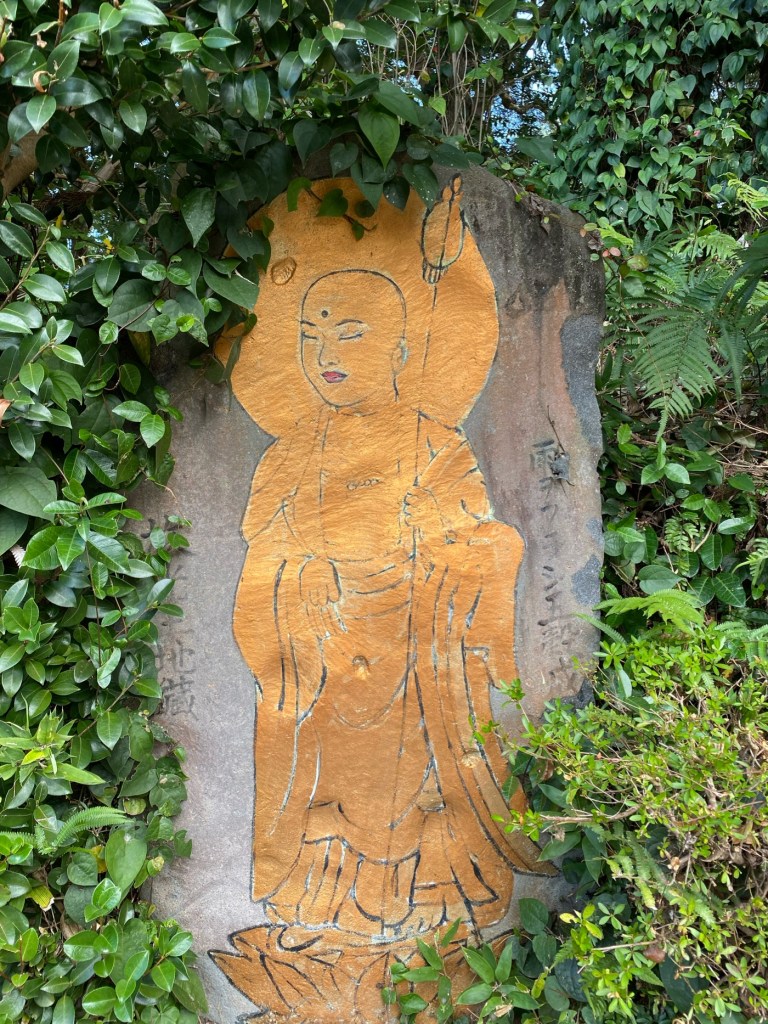
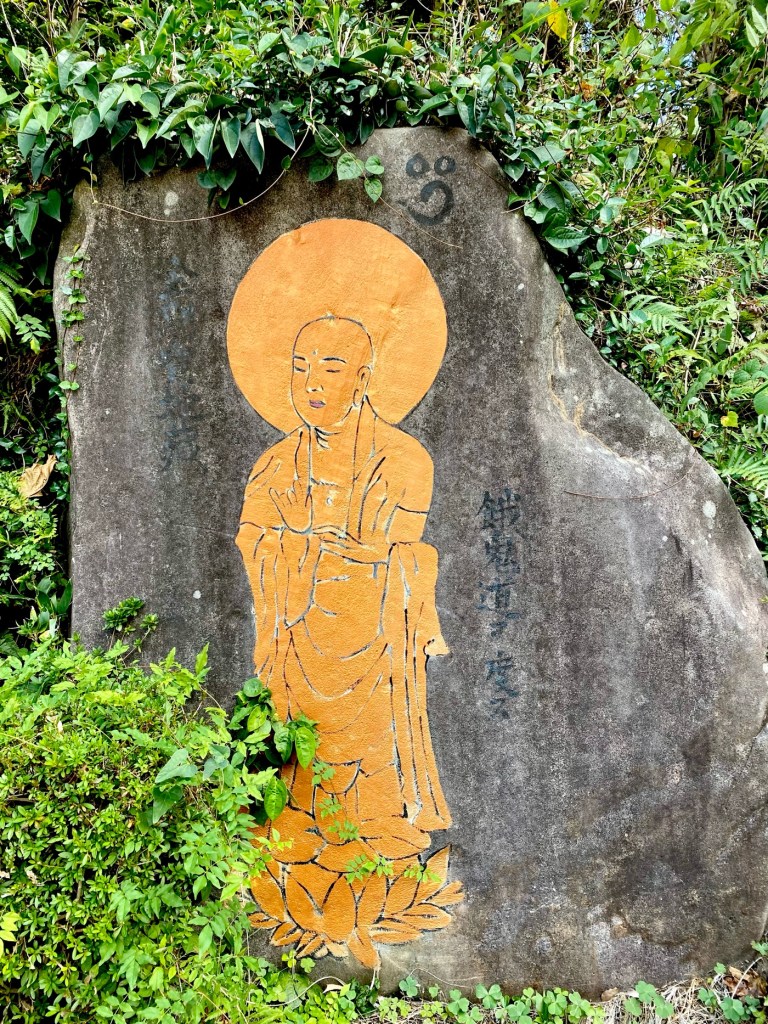
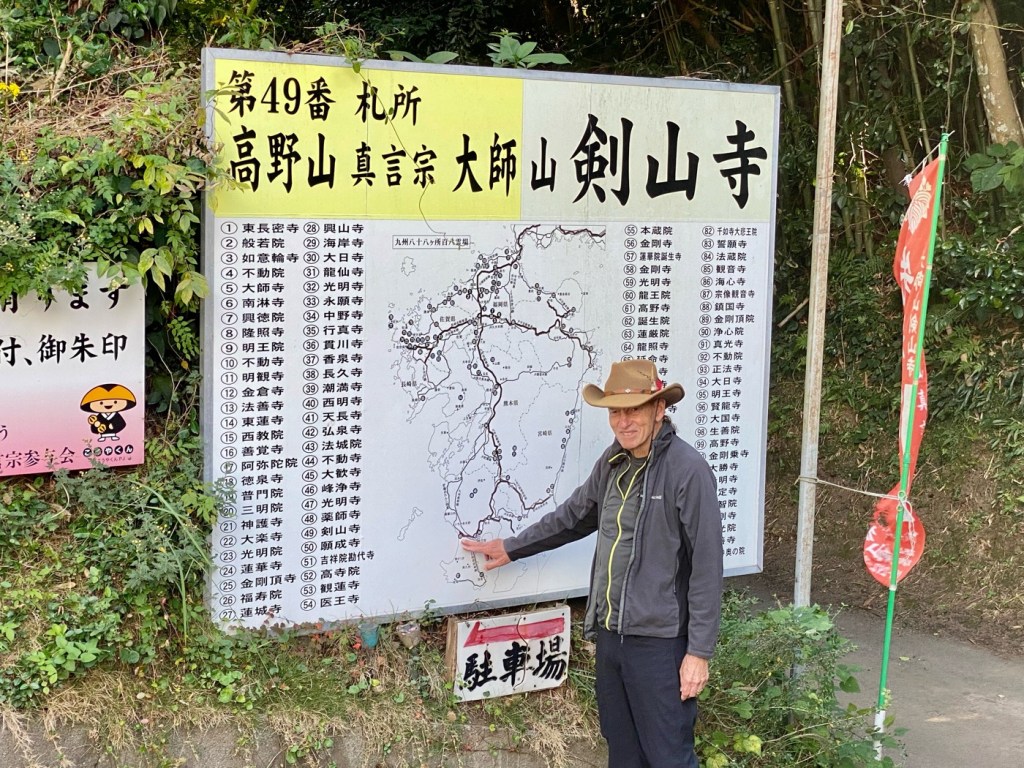
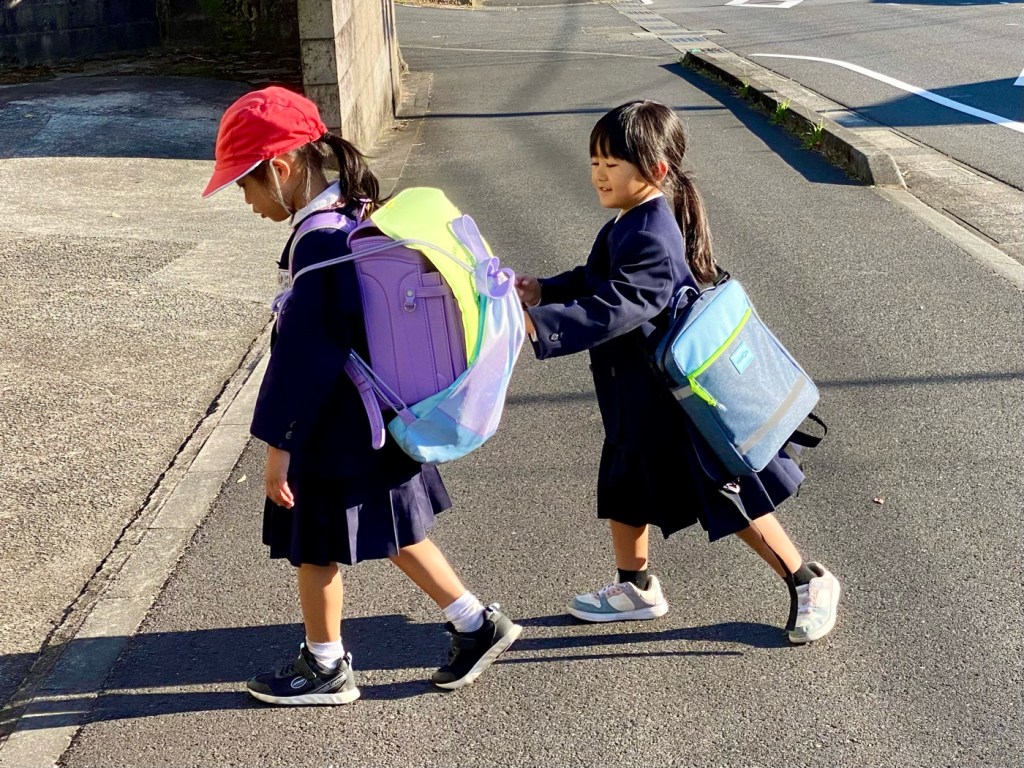
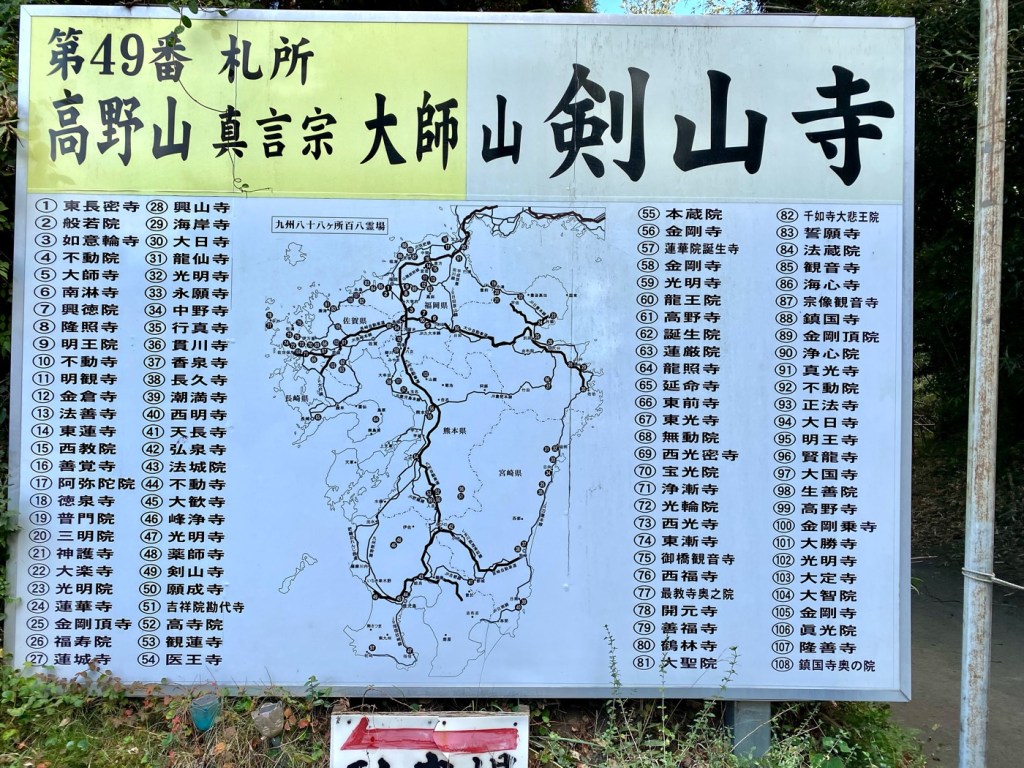
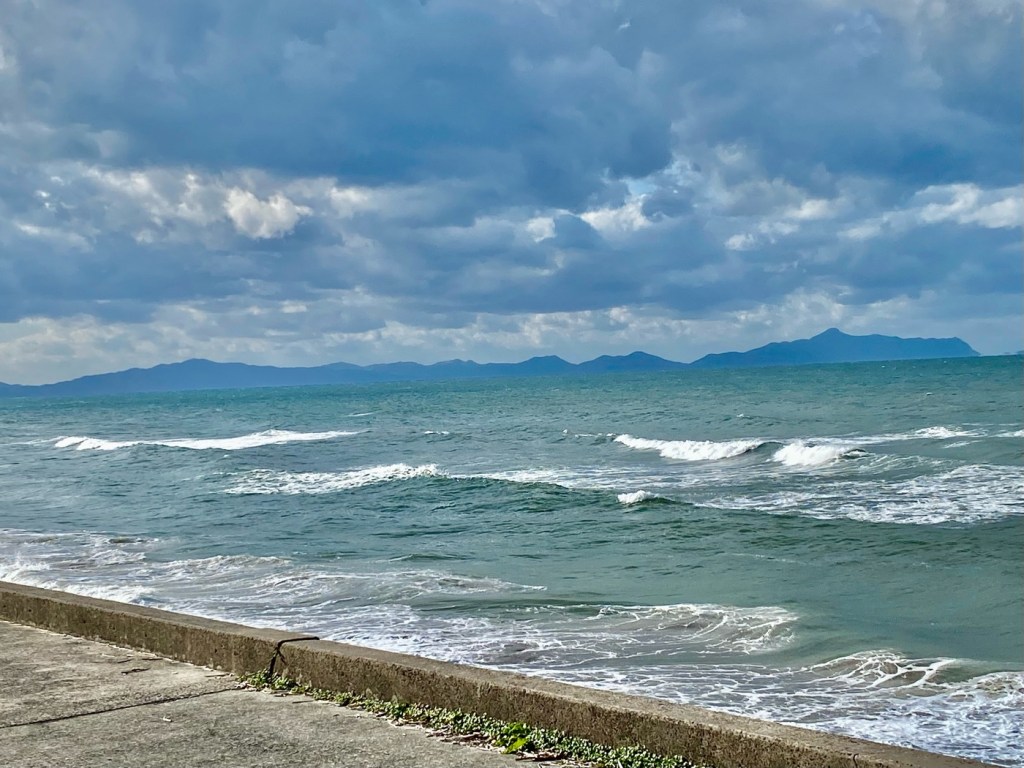
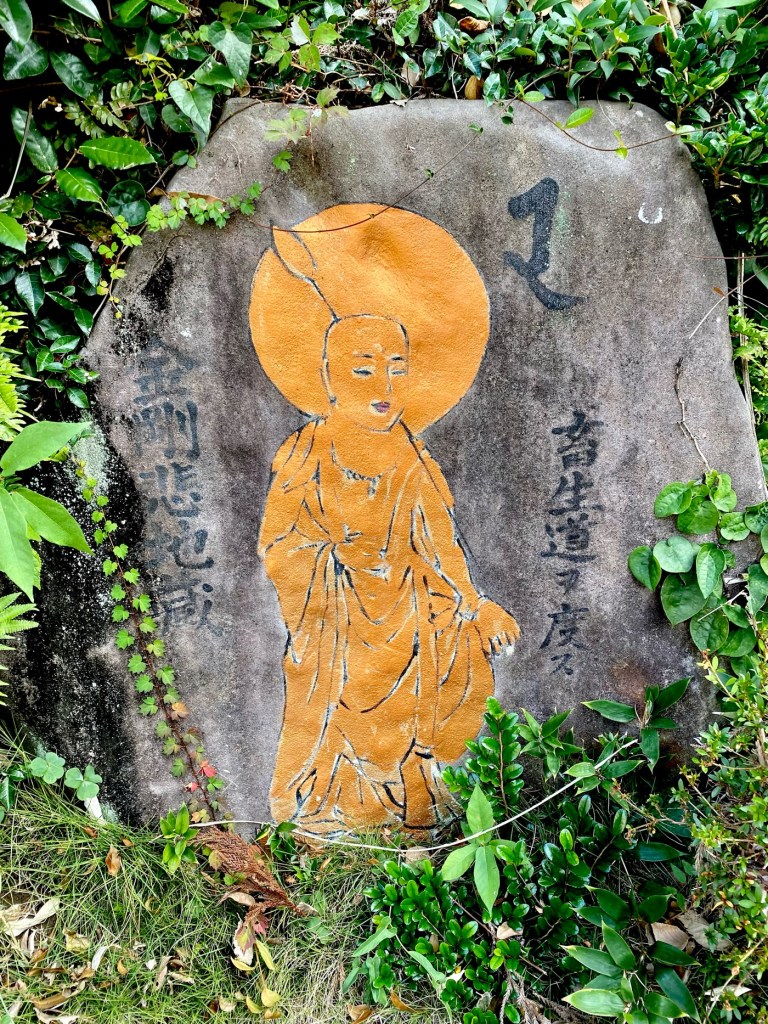
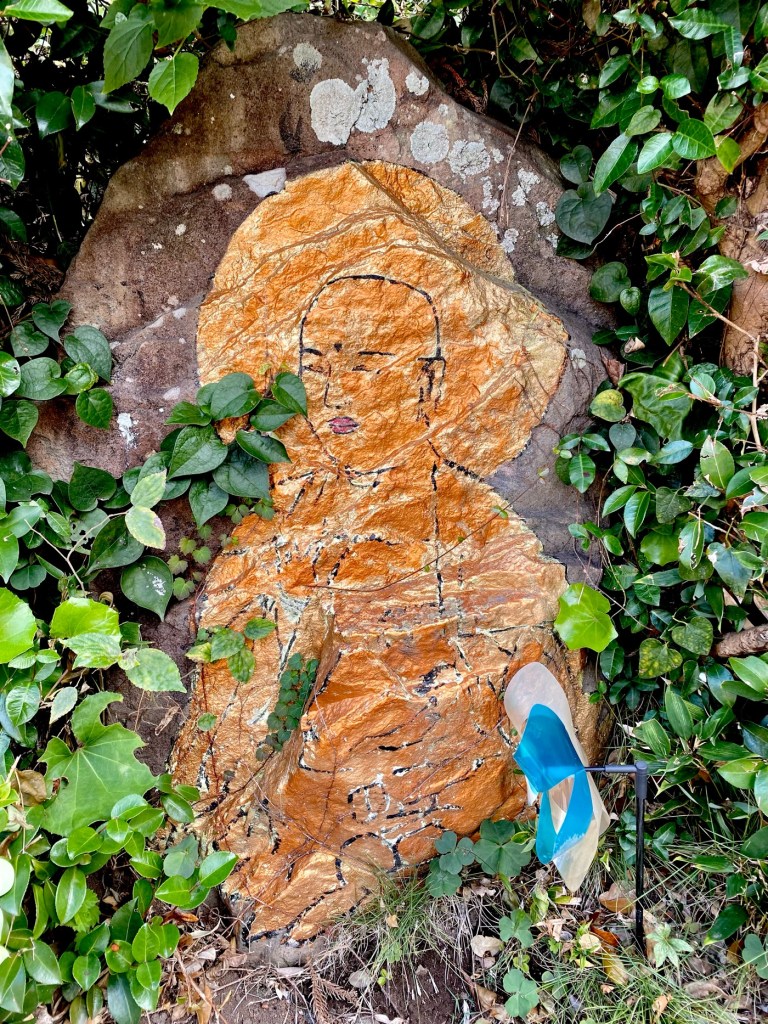
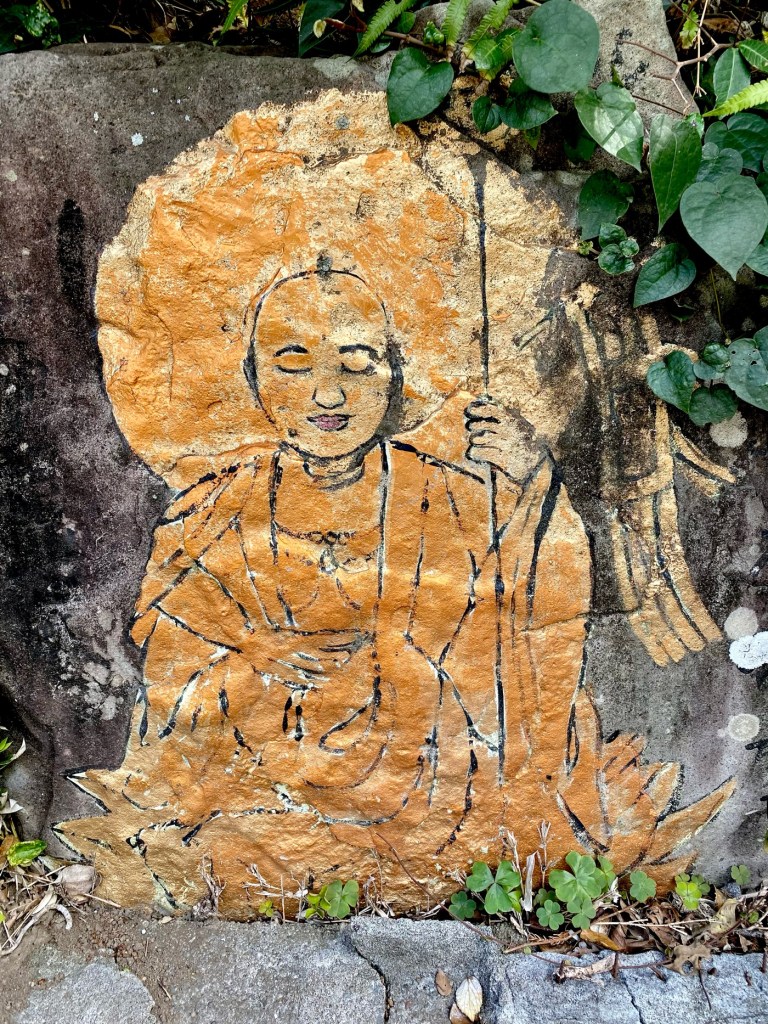

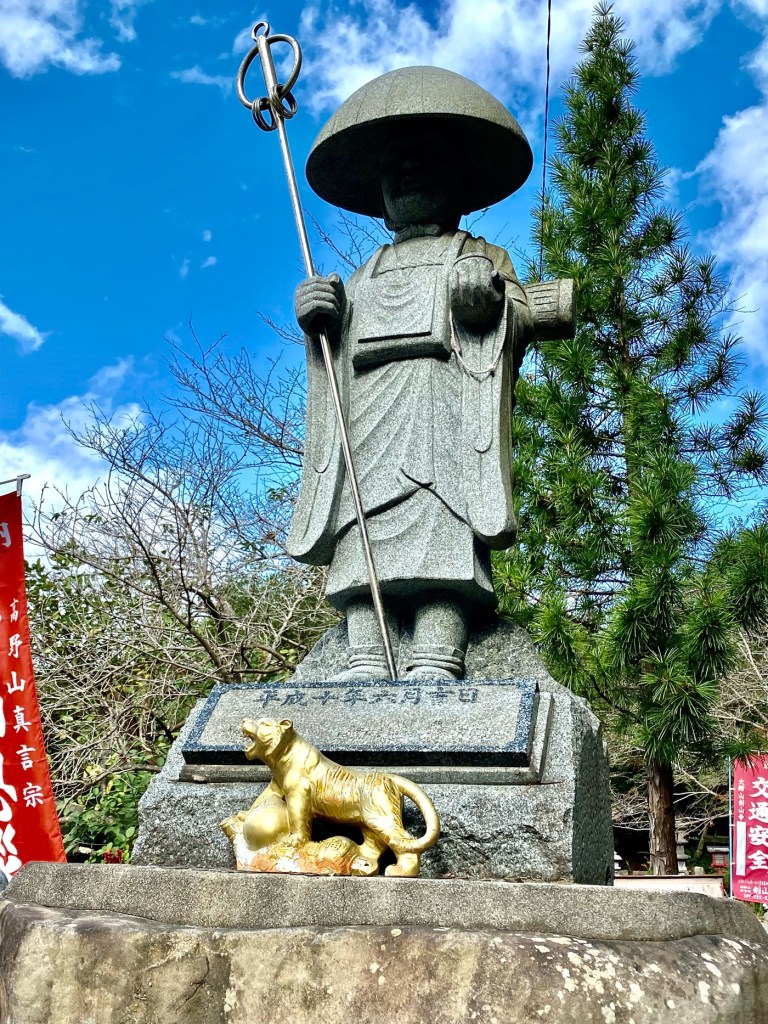
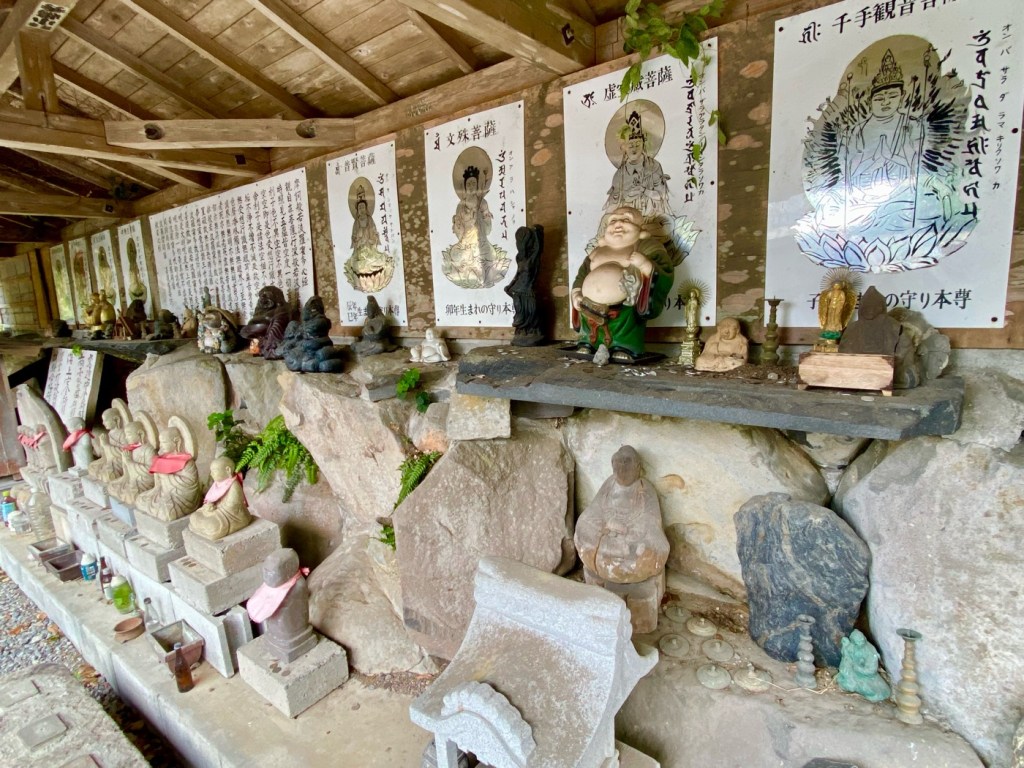
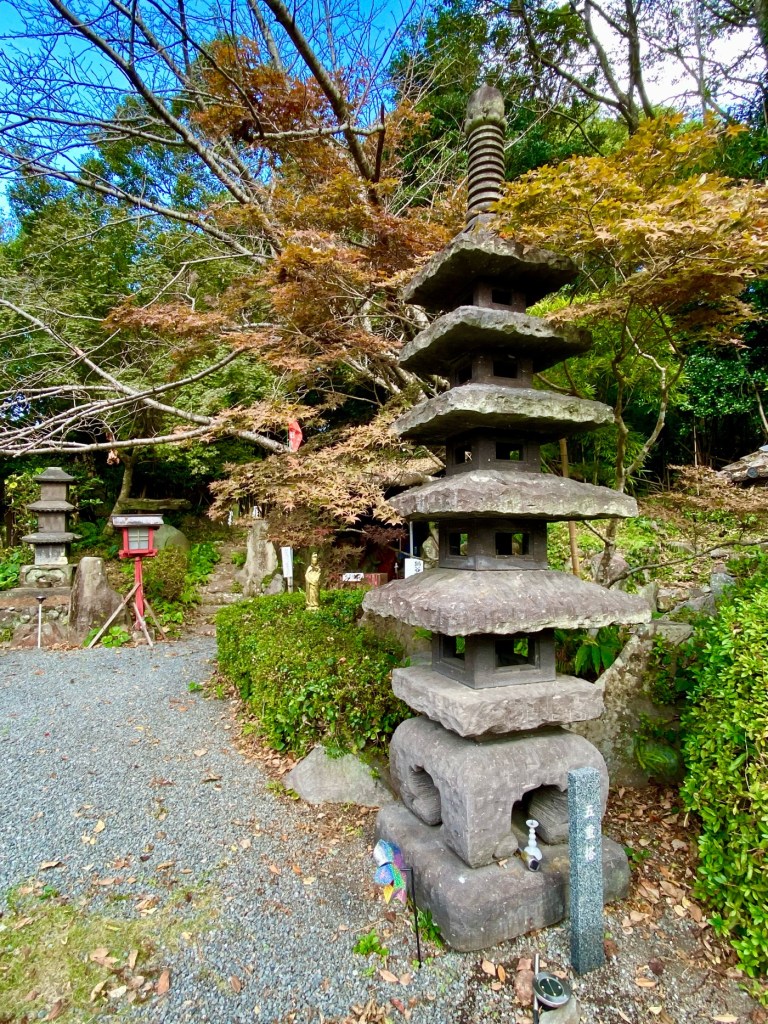
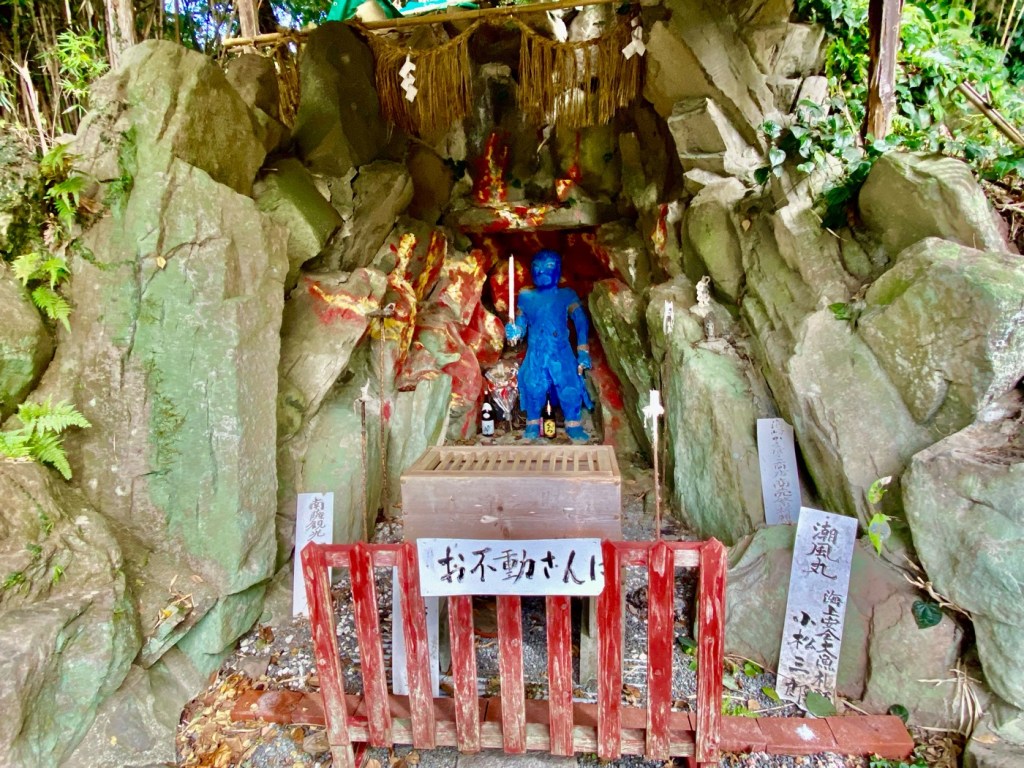
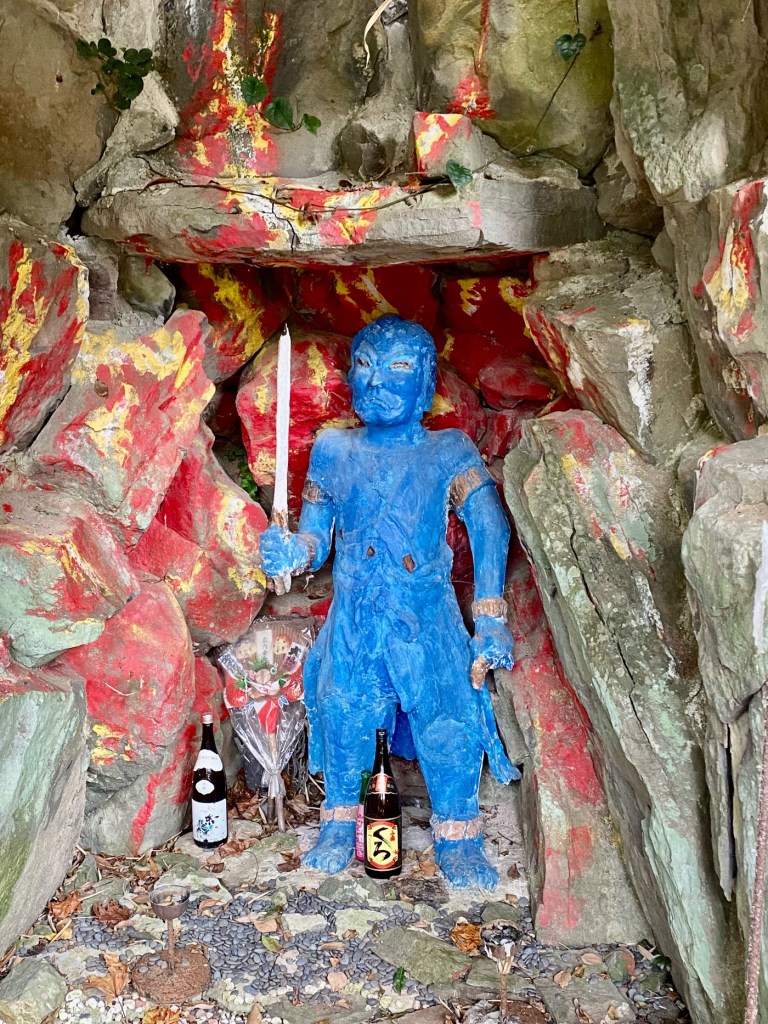
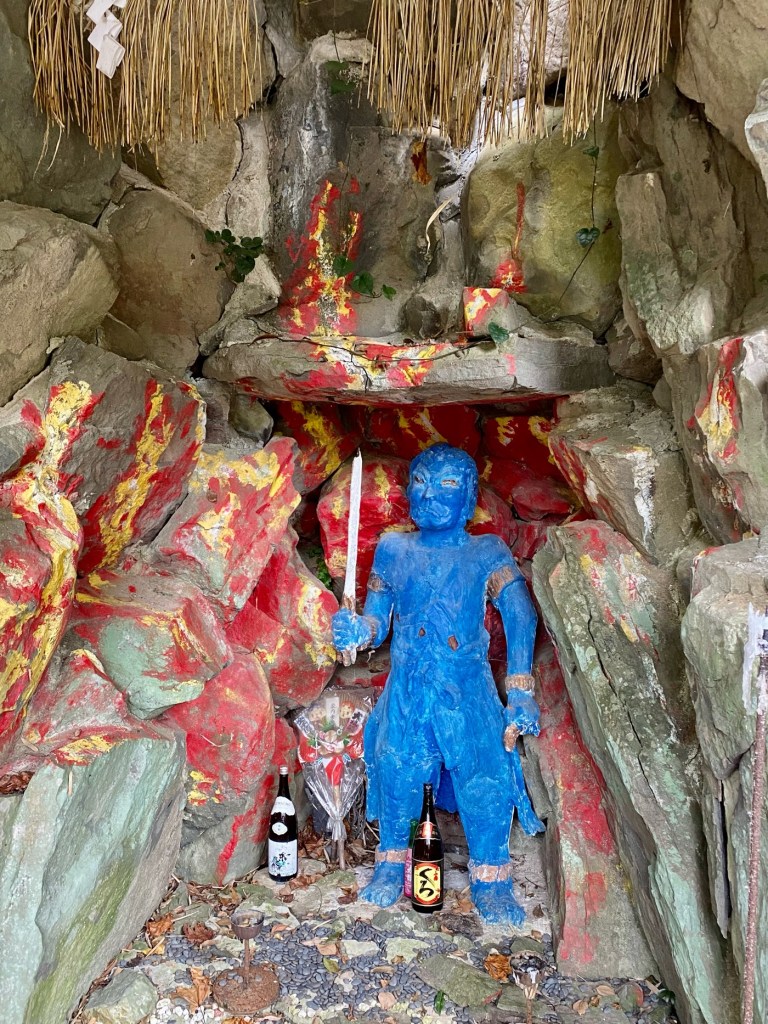
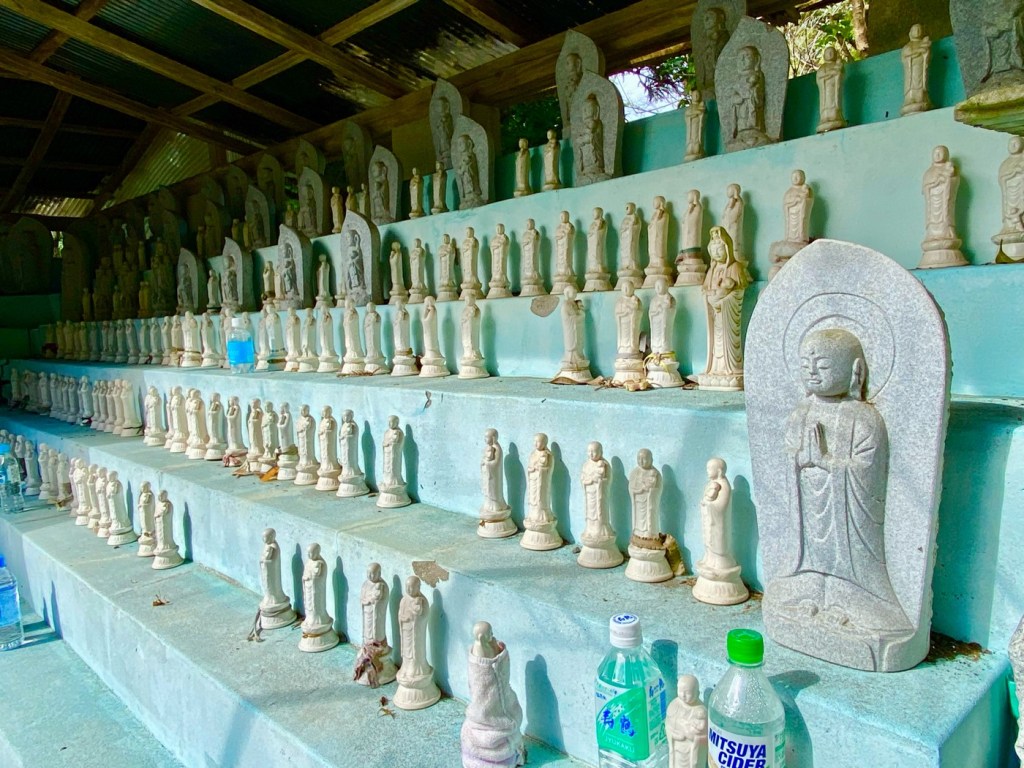
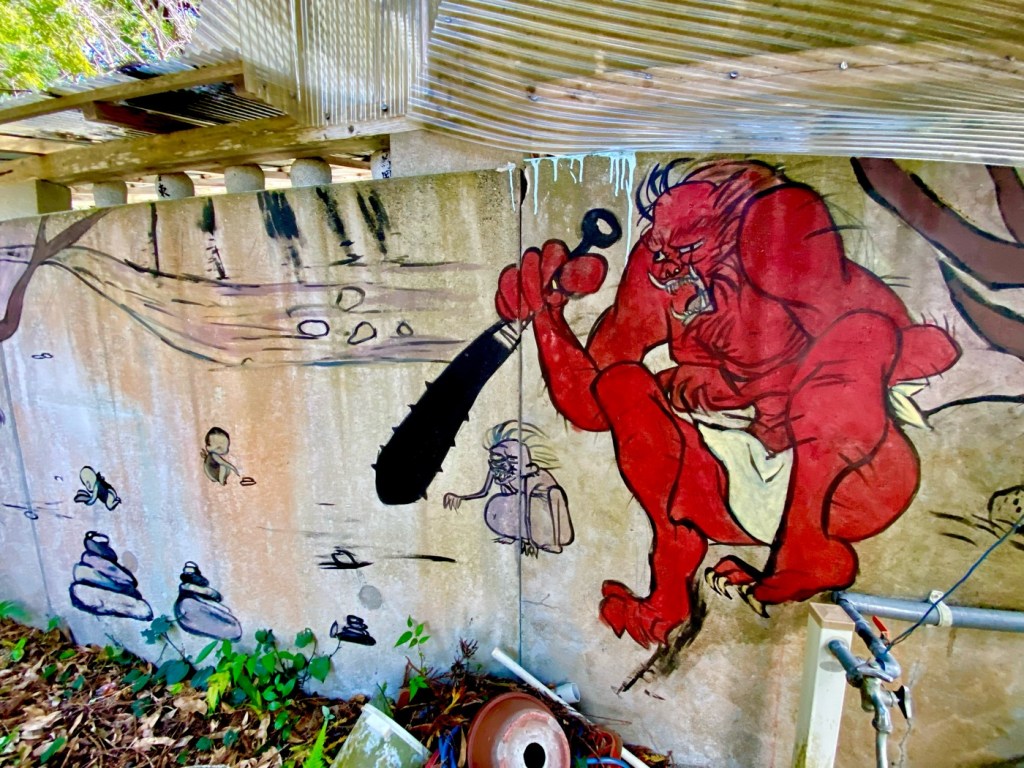
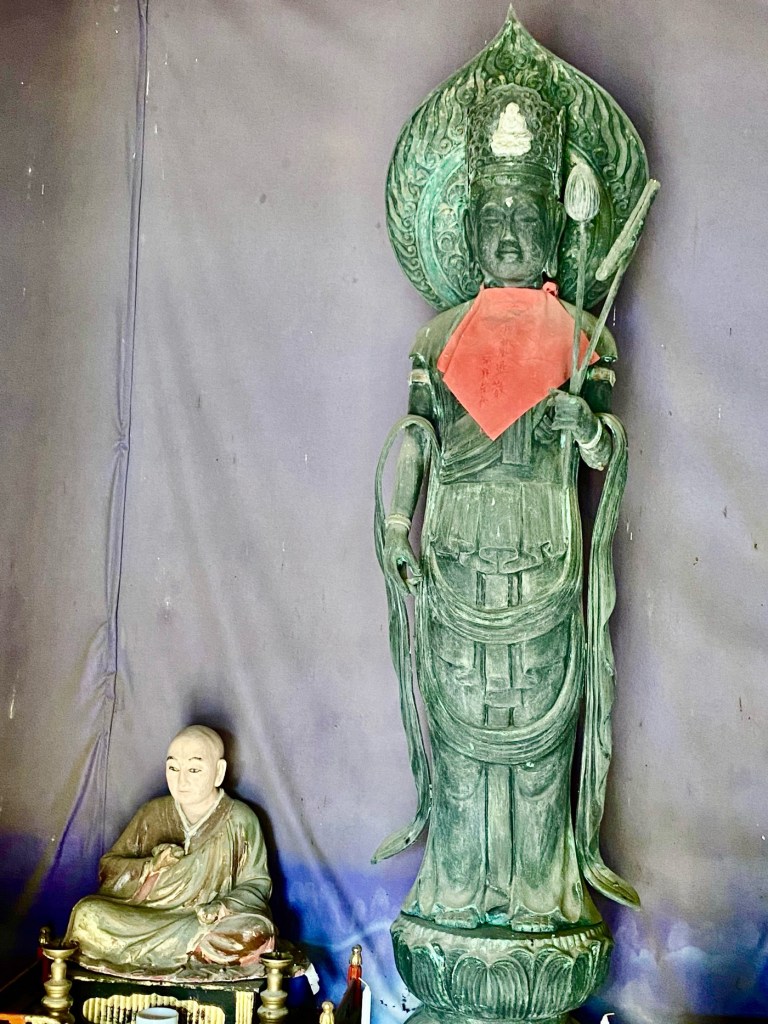
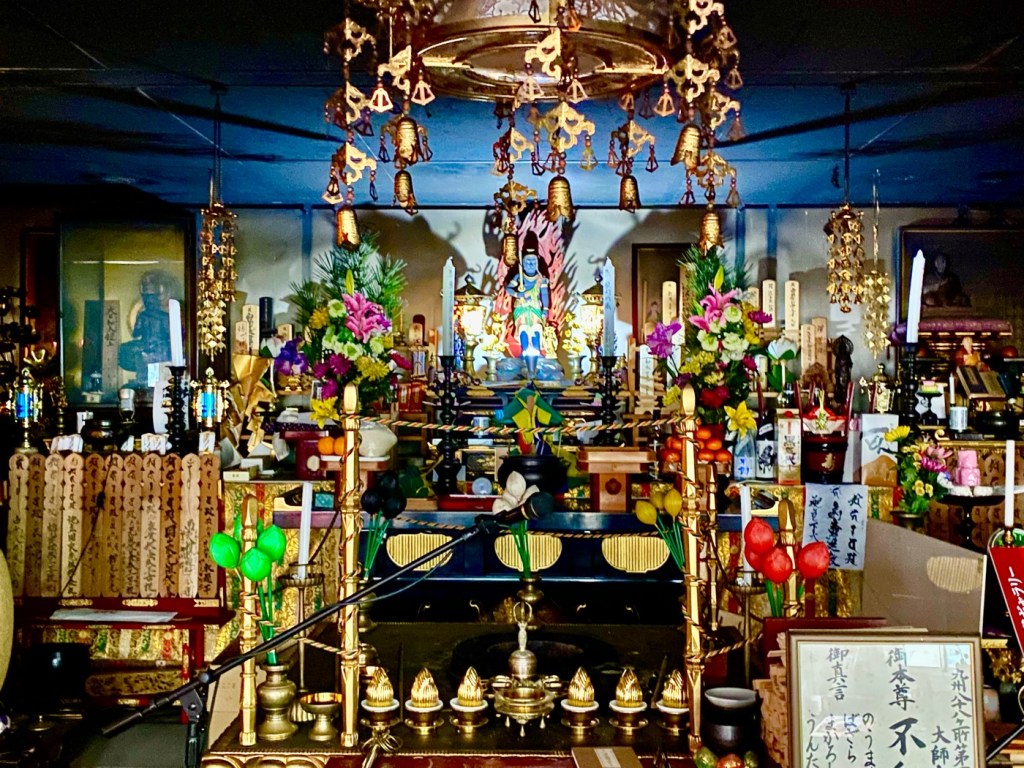
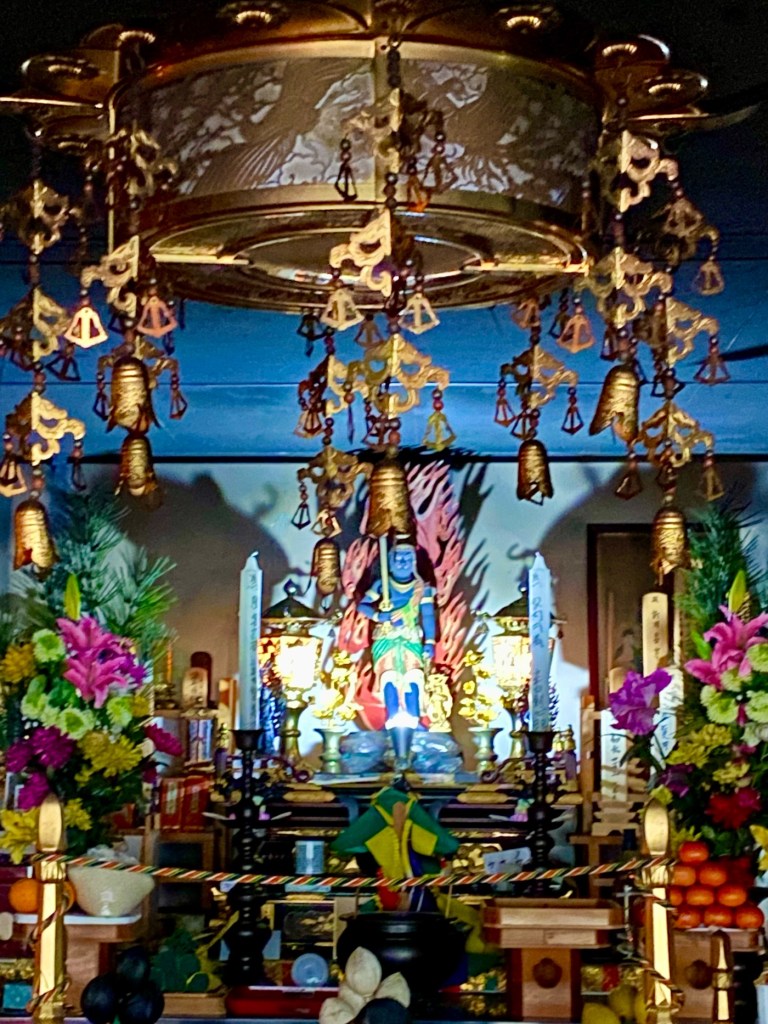
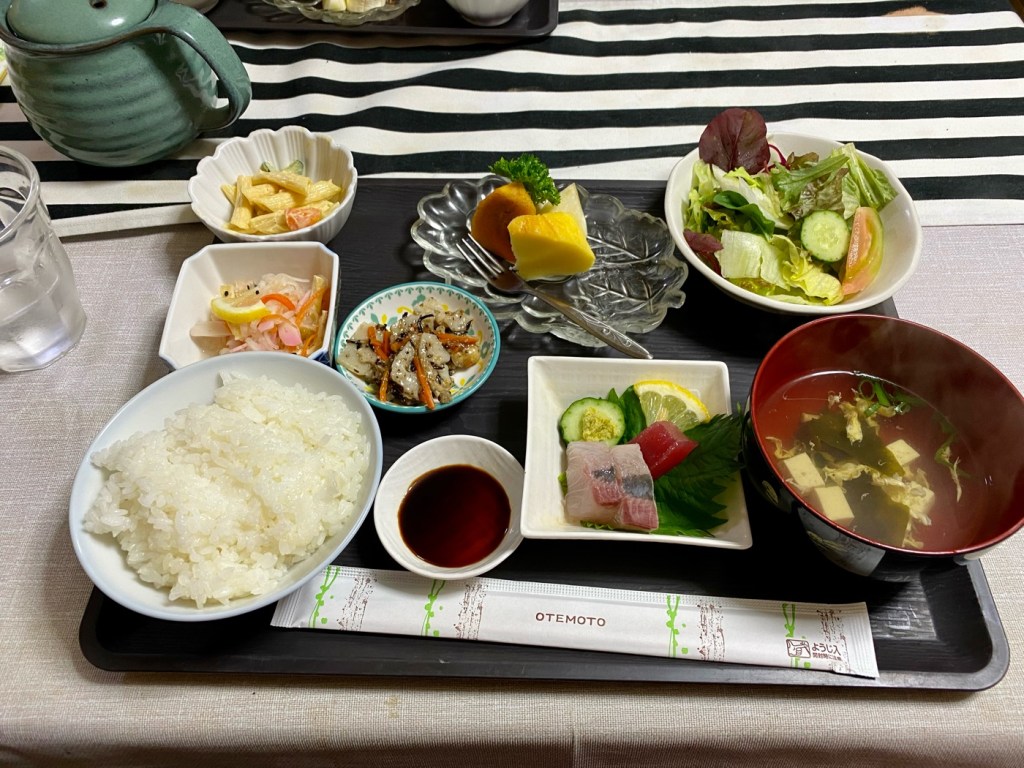
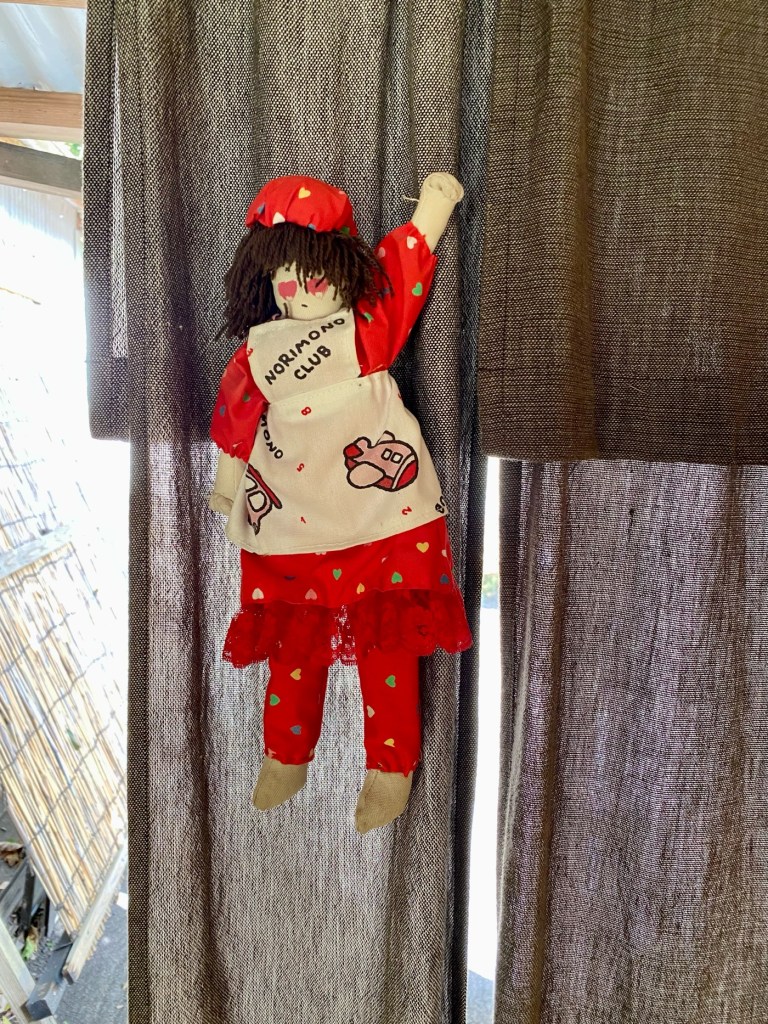
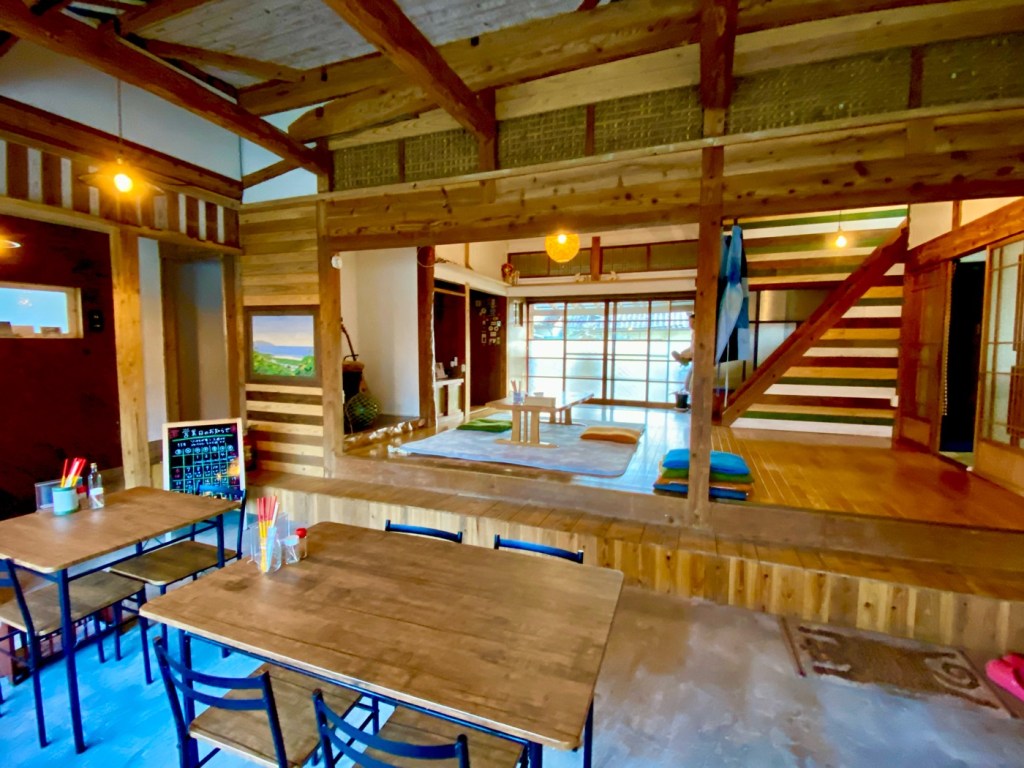
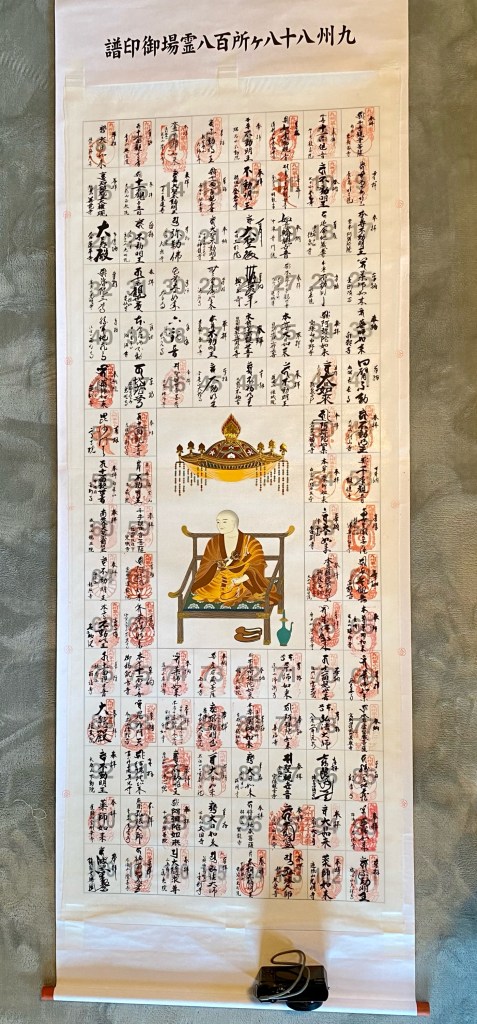

Day 50 - Kushikino To Hioki And Visiting A Thousand Year Old Tree, The Kyushu 108 Temple Pilgrimage, Japan
My morning soak in the hotel’s hot springs
was pretty crowded.
Most women came early, before breakfast, to have a soak.
Usually I do not mind a crowd in the hot springs, but this onsen in Kushikino has a really small bath, so I finished quickly and returned to the room.
The weather forecast called for a very windy day, so we bundled up.
We had a simple breakfast in our room, of tea, bananas and walnut bread with Camembert cheese.
We walked south from the hotel for a long time, through the mountains towards the sea.
When we reached the sea, it had powerful waves and very strong winds.
We rested on a picnic table overlooking the rough sea, and had tea and a snack.
Well, we tried to have tea, but the wind was so strong that it blew the tea out of our tea cups.
A man with a surfboard in his car was checking out the surf with a pair of binoculars.
He finally decided not to go in, and drove away.
We continued walking by the sea, with the strong wind blowing at our backs.
Often, the wind was so powerful that it made me sway sideways as I walked.
We left the main road and made many small turns in a rural neighborhood, where we saw a gardening crew trimming green hedges into beautiful shapes.
We arrived at Temple #49, Mt. Daishi Kenzan Temple.
It is a small temple in the northern part of a quiet town called Hioki.
Hioki is located south of Kushikino, with a view of the East China Sea.
The temple’s statement says:
“The principal image is a Fudo Myoo, who always listens to the stories of the worshippers with a smile.
I feel like he always talks to me saying, "Don't be in a hurry, don't hurry, you can stay as you are."
In the precincts, there is a three story pagoda that is about 400 years old.
I'm Komuta Sekishin, the chief priest of Kenzan-Dera Temple.
I would like to have fun and casual discussions with everyone who comes to worship, listen to their stories seriously, laugh together, cry, and suffer together.
I would like to convey the teachings of Kobo Daishi's heart to as many people as possible.”
We walked around the temple, looking at the different statues and buildings.
We saw no car by the house and no one answered when we rang the intercom, at the temple and at the house.
The place looked a bit neglected and messy, as if the family taking care of the temple had fallen behind on their chores.
The door to the main hall was open, so we went in and searched for the red seals to do the stamps on our own.
We could not find any stamps.
Finally, a lady’s voice spoke through the security camera, saying that the stamps were outside in the little office shed, and that its window slides open.
She must have been unhealthy and elderly and she apologized that she couldn’t come to meet us.
We stamped our book and scroll, chanted and left to walk to our guesthouse where we would be staying for the night.
It was a long walk in the wind with many hills, but we were thankful that our backpacks were light.
We got hungry but didn’t pass any places where we could eat and rest our feet.
We stopped at a farmers market, hoping to get something for lunch, but we did not like the cold bento boxes that they offered, and the only seating area was outdoors, where it was too windy to relax.
My maps showed that there was a small restaurant and guesthouse which was open for lunch, a few kilometers down the road.
We kept walking along route 270, south to Route 270 guesthouse and restaurant.
We were happy to see that they were open and were actually busy with customers.
They offered a 900 yen seafood lunch with dessert, soup, salad, steamed rice, a daikon and carrot hot salad, a lotus root and hijiki salad, roasted pumpkin and potatoes, a few pieces of sashimi, and a pasta salad.
It was more food than we could eat and everything was delicious, and a bargain at $6 per person, with unlimited green tea.
More than the tasty food and the good rest, everyone was so kind and welcoming towards us.
We chatted with everyone who were so curious about us.
The owner and chef who operated the restaurant along with his wife who was the waitress, came out of his busy kitchen to meet us.
He photographed us, saying that he had never seen any tourists in this area.
When we told him that we were walking pilgrims, he and everyone else started asking questions about our journey.
A group of workers were very interested in hearing more and kept us in conversation, after we had paid and gotten ready to leave.
One man was the same age as Jules and he could not believe that we could walk around all day.
Before we reached our guesthouse, we took a detour to visit and express our respects to a thousand year old camphor tree, standing in a Shinto shrine.
Oyomutoku Shrine is located in the town of Fukiage-machi, Hioki, and it is home to the largest camphor sacred tree in the south.
A busload of Japanese tourists had just arrived to visit the tree and beautiful shrine.
Along with everyone else, we rubbed the thick tree and then touched the parts of our bodies that needed healing and help.
Jules touched his eyes, as he is experiencing problems with his depth perception, and I rubbed my face as I am experiencing a twitch in my left eye.
According to classical legends, in ancient times, the god, Ōgyōmu Saku no Mikoto (Okuninushi no Mikoto) was actually a human being who had lived here, and Tia shrine is dedicated to him.
He did much work to open up the country, develop agriculture, develop industry and commerce, encourage industrial development and open clinics to help cure illnesses.
He is now believed to be the guardian deity watching over human life.
He helped promote happiness in the world, protected safety in transportation, navigation, marriages, the prosperity of descendants, child-rearing, long life, literary and military prosperity, as well as business prosperity.
Many people come to pray for success and protection against illness, for longevity, and for physical health.
The bridge on the right side of the shrine leads to the sacred tree.
It is said that it is a good idea to gently make a wish three times and place your hands on any areas of your body that are hurting, wishing for good health.
The ginkgo tree in front of the shrine is also a sacred tree.
It is said that it is good for men to place their hands on the left side and women on the right side to receive divine blessings.
Furthermore, for women, placing their hands on their breasts also improves the production of breast milk.
We arrived at the guesthouse in the early evening.
The big house was renovated in a very cool design, all made by hand with pieces of wood in the shape of waves and stained in different cool colors.
It is run by a young couple who live on the other side of the same house, with their three young children.
The husband used to be a ship captain for twenty years, but his job took him away from his family for three months at a time, and at times, he was gone for six months at a time.
The cool guesthouse is their new business venture.
They gave us a spacious room with a sitting area and showed us around the house.
After we settled in and had some tea, the husband took us to a local Onsen to have a soak.
It was one of those Onsens for locals, which never get tourists, so they didn’t have any shampoo, body soap or conditioner.
We bought small towels for two dollars and I brought my own hair conditioner, but I wondered what Jules did in the men’s bathing area.
Perhaps he asked one of the men for a squeeze of their shampoo…
When we finished bathing, we called the guesthouse and he came to pick us up.
We asked for them to make us dinner, which they provided for
guests by request, and they made us a delicious multi course dinner with fresh fish from the local fisherman.
An old man checked into the room across from us.
He had a cane, and I wondered how he would navigate the steep stairs without a railing in the middle of the night, when he has to go to pee.
We ate dinner next to him.
He apologized to us for his not being able to drink any alcohol, saying that his liver is hurting.
Then he complimented our Japanese and couldn’t get over our skill with chopsticks.
It is something we have encountered often in old Japan.
Older people cannot believe that foreigners can use chopsticks, but this man was so amused by our skill with chopsticks, that it was almost as strange as seeing a monkey in a zoo, using chopsticks.
We talked about what we were doing in this area that gets very few tourists, and we said that we were pilgrims, on a long journey around Kyushu island.
They asked us if people were kind to us.
We said that everyone had been very friendly and kind and plied us with food and drinks and gifts.
The guesthouse owners said that Japanese people believe that if a pilgrim (Ohenro) stays in your house, it is like a true blessing or a god, visiting your home.
They truly honor pilgrims.
Before we went to bed, they promised to take us in the morning to soak in another, very old local Onsen, but we had a busy day planned and wanted to get an early start.
Sending you love and light,
Tali
Stats: 35,977 steps
Today’s walk: 25 km
Kilometers walked to date: 857
Temples visited:
Temple #49 Mt. Daishi Kenzan Temple (Daishizan, Kenzanji)